 | © 2001-2024 ./) . . ./) . . |
 Better Sailing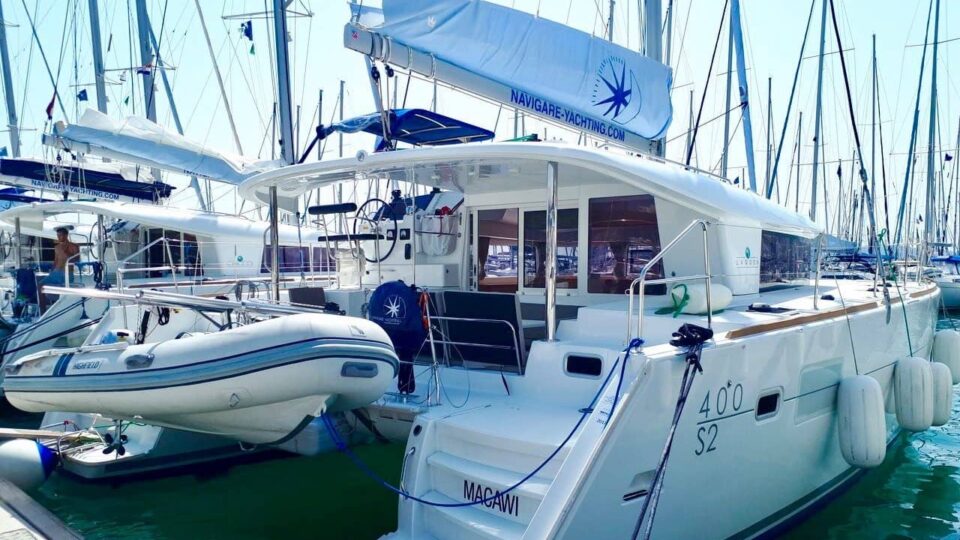 Average Cost Of Owning a 40-Foot Catamaran SailboatEvery boater or boat enthusiast knows that boats come in different sizes and forms. You have boats the size of a small speed boat to some as big as a 60-foot catamaran. And obviously, they would also have different price tags on them and different upkeep and maintenance costs. I mean, you don’t expect the price for a small speed boat and a 60-foot cat to be remotely equal now, would you? Moving to the topic at hand, how much will it cost to own a 40-foot catamaran boat? This is the question that should be on the mind of anyone planning to purchase one. When looking at the cost of owning one, you will have to consider a lot of factors, such as the cost of buying said boat, the cost of maintaining the boat, and living expenses and utilities on the boat. Buying the Boat You should know exactly how much the boat you want to go for costs. There are different types and brands of 40-foot Catamaran Sailboats in the world from different designers, and all of them go for different prices. Therefore, you should research the boats and look for one that fits snugly into your budget. Here is a list of some decent 40-footer vessels and the price they will go for: - The Bali 4.0: The Bali 4.0 is a modern marvel. She’s a 40-foot cat that combines the most attractive new characteristics of the modern cat, making it desirable. The 2016 model goes for about $391,247.
- The Fountaine Pajot Lucia 40: She is a lovely vessel with a very stylish interior design. She’s lightweight but is smaller in volume than her other models. The Lucia 40 comes in different versions like the Lucia 40 Equator with 4 cabins/4 bathrooms or 4 cabins/2 bathrooms and the Lucia 40 Maestro that has 3 cabins/3 bathrooms or 3 cabins/2 bathrooms. She is priced at around $390,043.
- The Lagoon 400S2: She has decent performance on water with a big interior volume and luxurious accommodation that is spacious enough for a couple to enjoy their sale. The 2016 model goes for about $429,000, while the 2015 model goes for about $335,900.
- Leopard 40: She is heavier than other catamaran models, but it doesn’t make her any less classy. The bridge deck is lower than those seen on other cats, which allows for more buoyancy. The 2008 version cost about $250,000 while the 2006 version costs about $205,000.
Please note that the prices listed for all the boats above are estimates, and they vary from dealer to dealer. Also, note that the age of the boat will have a considerable effect on the price. 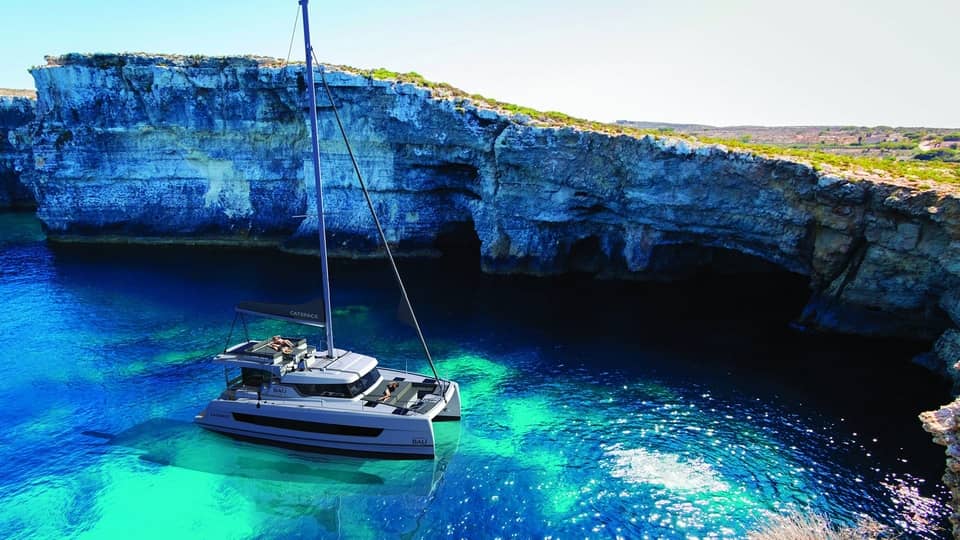 >>Also Read: 10 Best Catamarans Under 40 Feet Costs After Buying Your Boat- Tax: Now, this is something you can’t escape. The amount you have to pay in tax is heavily dependent on the state you reside in. But irrespective of where you stay, there are 3 basic tax fees you have to pay: sales tax, use tax, and personal property tax.
- Insurance: You have to insure your boat just in case. A lot of factors affect insurance, like the age of the boat, length, value, and speed of the boat. For a catamaran sailboat, you need to get boat insurance.
- Fuel and diesel: The amount of fuel a vessel will need depends on the design and size. For example, a 50-gallon (190 litters) tank of fuel can propel a 3-foot sailboat for 300 miles (482.8 km) but will barely last a 40-foot cat going at high speeds for 33 miles (53.11 km). However, this cost depends highly on you based on how much you use the wind and your sails as a means of propulsion.
- Mooring: Where you decide to dock your boat has a significant impact on your finances. Mooring is a time-based charge that is applied to all vessels for staying in a marina. The cost of mooring depends on a lot of factors, like where you decide to dock, the type of vessel you want to dock, and how long you want the boat to stay on the marina. For docking a 40-foot cat, you could spend $12,042 yearly in a popular marina with long waiting lists. The price drops for marinas with little or no waiting lists. Also, the bigger the boat, the more expensive the mooring fee will be. A lot of marinas offer additional services on top of the basic package. Of course, this will also incur additional costs. Another aspect of owning a cat that costs money is the maintenance of the boat. When the cat sets sail, it’s exposed to the harsh marine environment, which is detrimental in the long run to the boat. Hence, it is necessary for regular checks, repairs, and replacements to be done to the boat.
>>Also Read: 10 Best Catamaran Brands Maintenance Costs to Consider- Washing the vessel: washing the boat regularly is very important. Keep the boat neat and attractive.
- Cleaning the rails.
- Inspecting and washing sails of the boat, including fixing any tear or damage to the sail.
- Ventilation of the interior parts of the yacht.
- Maintenance of the boat plumbing system.
- Clearing the sewage tank.
- Regularly scrubbing up the barnacles that are stuck on the bottom of the hull. Do not forget to check for cracks and chips. Also, treat the bottom with anti-fouling coating polishing for the hull. You could hire professional divers to help with cleaning the bottom.
- Polishing the hull: You need to remember to polish or even repaint the hulls of the boat when the paint starts washing off or wears out. Before polishing, make sure to inspect the hull for any damage.
- Do not forget to take care of the engine of the boat; always do regular checks on the oil level and clean the filter.
- Take care of the boat battery and replace it when the battery is out of commission.
- For the interior parts of the boat, the vinyl furniture in the boat has to be cleaned several times in a season. Also, remember to use the correct cleaners, or else you could cause more damage and incur more costs. To reupholster a piece of vinyl furniture, for example, would cost around $500 to $3,500.
You will also have to put enough money into the safety of the crew or the family aboard. You have to purchase life jackets, paddle horns and signal flares, marine binoculars, and waterproof materials in case of an emergency. In addition, you will have to pay for basic utilities like electricity, cable, garbage disposal, and clearing out the sewage. In some cases, you might even have to pay for storage. However, you can’t really put a specific price for the above list because there are too many variables in place. 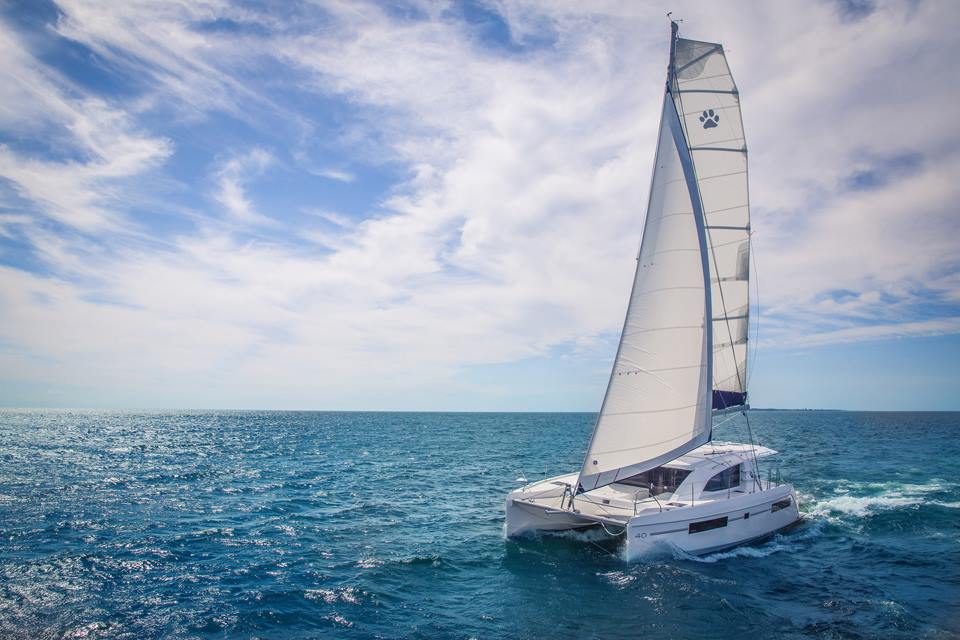 >>Also Read: Catamarans vs Monohulls: Which is Better a Better Sailboat For You? Average Cost Of Owning a 40-Foot Catamaran Sailboat – Final ThoughtsIn conclusion, owning a 40-foot catamaran sailboat might seem like an awesome and flush idea at the beginning. However, boat enthusiasts and prospective buyers out there should always keep in mind that there will always be additional costs that come with keeping and maintaining the boat so that it remains in its prime condition. Many brokers/people who sell boats would advise any prospective buyer to rent or charter the vessel for a while to get a feel for the responsibilities and work that comes with owning a boat before you finally decide to buy the boat. As you can probably imagine by now, there is not a clear answer to this question. However, the most accurate answer would be that the cost of owning and maintaining a 40-Foot Catamaran Sailboat is around 10% of its purchase price. Meaning that if you buy a $300,000 catamaran, it will run you around $30,000 to own.  Peter is the editor of Better Sailing. He has sailed for countless hours and has maintained his own boats and sailboats for years. After years of trial and error, he decided to start this website to share the knowledge. Related Posts The Ultimate Guide to Choosing the Best Fishing Line for Trolling Lagoon Catamaran Review: Are Lagoon Catamarans Good? Best Inboard Boat Engine Brands Are O’Day Sailboats Good? A Closer Look at a Classic Brand- Buyer's Guide
- Destinations
- Maintenance
- Sailing Info
Hit enter to search or ESC to close.  Average Sailboat Prices: 27 Helpful Examples (With Pictures) The average price of used sailboats is around $21,000, but new boats cost $60,000 on average and upwards. Some used boats can be purchased for less than $10,000, depending on their age, size, and condition. This is because pre-owned sailboats have about 80 percent of the market share. You will find models from the early 1960s still racing across the Pacific and Atlantic like new. So what are your options? Below, we provide a comprehensive list of enduring sailboat designs: You can also check out our in-depth guide for more information on general boat average prices. In this guide, we have included a long list of boat types Table of Contents 27 Good Examples When Looking At Sailboat Prices1) tayana 37.  Marine designer Robert Perry is arguably one of the most prolific in the boatbuilding world. His Tayana 37 is one of the most popular production sailboats of all time, with over 650 built. The Tayana 37 features a sturdy fiberglass hull and a balsa-cored deck for smooth and comfortable circumnavigation. It comes with a variety of customizations, including different rigs, decks, accommodation, and more. However, the early boats have V-berths, a high-aspect-ration rig, and a luxurious teak-trimmed interior. Measuring 36’8″ in length with a displacement of 24,000 pounds, the Tayana 37 is one of the best world cruisers ever made. While production stopped in 2016, you can get one for $34,000 to $65,000. 2) Catalina 22 Depending on the production year, the ubiquitous Catalina 22 can be as low as $4,000 or up to $15,000 for recent models. This trailerable sailboat was first built in 1969 and enjoyed popularity thanks to its family-friendliness and compact design. With over 10,000 boats commissioned, the Catalina 22 and its successors Catalina 27 and Catalina 30 are a permanent feature at lakes, rivers, and the high seas. Despite its size, the Catalina 22 can hold its own in rough seas thanks to the hand-laid fiberglass hull. It is spacious below deck and comes with all the facilities you need to feel at home. Whether you are a club racer or weekend cruiser, this dependable platform offers one of the best values for money when you want to spend quality time on the water. If you get one with a trailer, that can save you a lot of money on marina and storage fees over time. 3) Hunter 356 Starting in 2000, Glenn Henderson’s Hunter 356 took the sailboat industry by storm. 500 boats later, the 356 is still one of the best high-performance sailboats in its class. This boat features a solid and balanced hull, shoal draft, and exceptional sailing qualities. It has a sleek design, a clutter-free cockpit, and is easy to handle. Early production Hunter 356s are available for less than $60,000. Hunter Marine no longer produces the 356, but the sailboat is still popular among sailors old and young. 4) Contessa 26 The compact Contessa 26 was designed by David Sadler and Jeremy Rodgers in the 1960s. It blew into the limelight when it helped Tanie Aebi complete her solo circumnavigation. This fiberglass monohull is a sturdy and dependable vessel, and around 650 are voyaging across the oceans today. She has a low freeboard, and the rudder is attached to the keel in a strong, traditional manner. While you may have to bend a bit to access the cabin, there is plenty of space and amenities to deliver a home-away-from-home feel. This is one of the most popular British sailboats and is most sought after by long-distance ocean sailors or just someone who wants a classic sailboat. You can get a well-kept boat of this type for less than $10,000 or over $20,000. The sister ship Contessa 32 is also a well-built model popular among sailors. 5) Island Packet 31 If you love sailing in shallow waters, the Island Packet 31 is designed for the shoal draft needed to safely navigate Florida waters. Featuring a solid fiberglass hull, the 31 has an end-grain balsa core deck, which gives it a powerful and solid feeling. The boat is roomy, comfortable, and is designed to be simple to use and maintain. While her seagoing credentials might not be the best, the Island Packet 31 is a vintage liveaboard yacht with all the trappings of royalty. This boat costs about $35,000 to $50,000. 6) Bristol 40 This Ted Hood design is one of the best cruising boat designs of all time. Featuring a narrow beam and solid hull, the Bristol 40 has a low freeboard, large overhangs, and exceptional seaworthiness. Its long keel carries an attached rudder for excellent tracking and stability. The Bristol 40 has a relatively small interior with separate cabins , sea berths, and an enclosed head. This boat was produced in keel or keel/centerboard configuration and came with the powerful Atomic 4 gas engine. Many have been upgraded to diesel engines. If you want a vintage racing sailboat that can deliver an impressive pace in the water, consider one of these. The Bristol 40 was produced from 1966 to 1986, and you can get one for $29,000 to $49,000. 7) Cape Dory 30 This 30-footer introduced in 1976 is a popular sailboat for people on a budget. It boasts a robust design with a solid single hull, balsa-cored deck, and extensive bronze and teak hardware in the interior and exterior. Like the Bristol 40, this boat has its rudder attached to the keel for stable tracking and safety, but not as much overhang in the stern. The space below the deck uses a traditional design. But this tried and tested design is still ruling the waves. For more room and improved handling, you can check out the bigger Cape Dory MK11, which comes at over $50,000.  If you live on the West Coast of the United States, chances are you’ve seen one of these beauties. Over 400 units of the Gulf 32 were produced, and the boat’s durable construction and beautiful design make it a good fit for many sailors. It features a flush cambered deck, a sweeping sheer, and a low profile pilothouse, making it stand out on the water. Specifications for the boat differ because it was built by two different boatyards. However, all Gulf 32 boats have a cavernous interior, comfortable wood finishes, and motorsailer dimensions. Good samples of this model go for $24,000 to $39,000 but check the side decks for delamination. 9) Endeavour 37 The Endeavour 37 is the successor of the successful Endeavour 32. It is available as a sloop and ketch and comes with a powerful Perkins 4-108 diesel to provide good power for its heavy design. The Endeavour 37 can be slow going upwind because of its weight but offers comfortable and smooth rides. The hull is single fiberglass, and the interior comes with plenty of plywood, although the craftsmanship is exceptional. The boat could have two aft cabins with a convertible dinette forward or a single aft cabin with a V-berth forward. It sells for $20,000-$49,000. 10) Tartan 37 The Tartan 37 is one of the three 37-footers Tartan Marine built over the years and the most popular. This boat has a balsa-cored hull and deck and external lead ballast. The bulkheads are firmly tabbed to the deck to provide good structural strength. With over 500 built, the Tartan 37 is a fast boat ideal for racing. You can still find these boats for $23,000 and upward. 11) Islander 36 As the name suggests, the Islander 36 is a 36-footer sailboat designed by the Australian Alan Gurney for Islander Yachts. It features a skeg-mounted rudder, fin keel and has a solid fiberglass hull. Unlike most sailboats with end-grain balsa deck, the Islander 36 uses plywood, which increases weight and can be stronger, but it can also get wet from leaks in the deck and rot. What the boat excels at is the interior space. The boat’s wide beam allowed the builder to provide more accommodation, unlike other boats in its category. Over 1,000 units of this boat were built, and you can buy one for $22,000 and above. 12) Hallberg-Rassy 35 Rasmus This Olle Enderlein design features a center cockpit, a huge windscreen, and a full keel for improved stability and handling. It has all the amenities of a small home, including a saloon, galley, main cabin, v-berth, and enclosed head. The sailboat has a solid fiberglass construction and rides well in choppy waters. A 75HP Volvo Pentad MD21 diesel supplements wind power, making this boat a reliable cruiser. The boat sells for about $30,000. 13) Dufour Arpege 30 You might not hear of this boat builder often, but it was one of the most successful in France and beyond. The Arpege 30 sports luxurious facilities include stylish sea berths, a large galley, and plenty of forepeak storage compartments. This 30-footer was so popular over 1,500 were sold from 1966 onward. If you need a classic sailboat with high-end performance and fittings, this weekend cruiser is it. One of these beauties goes for around $18,000 14) Mason 43/44 The Taiwan-built Maison 43/44 from Al Mason is a fast, comfortable, and reliable oceangoing sailboat. These boats were first introduced as the Mason 43 and upgraded to the Mason 44 in 1985. The boat has a full keel and a cutter rig and rides well in the sea. There are double-berth cabins fore and aft, a galley, and everything a small family or couple needs to cross any ocean in comfort. These beautiful boats are still found in docks worldwide and go for $60,00 to over $120,000. 15) Nor’Sea 27 This 27-footer designed by Lyle Hess is one of the most affordable and ocean-capable sailboats still in production today. Despite being compact enough to move by trailer from one boating hotspot to another, the Nor’Sea 27 can take you safely across any ocean. Don’t be fooled by its small size; this is a solid boat that can withstand a heavy bashing at sea. It has a lapstrake fiberglass hull, a full keel, sturdy bulwarks, and a round stern for exceptional seaworthiness. The Nor’Sea 27 featured a bowsprit and extended anchor roller, giving it a traditional sailboat appearance. If you need an affordable sailboat that can circumnavigate the world, the Nor’Sea 27 is a capable cruiser that won’t hurt your purse. You can get a 1981 model for less than $30,000. 16) C&C Landfall 38 If you need a highly maneuverable sailboat, fast, and has exceptional cruising capabilities, one of the best examples is the Landfall 38. This boat was produced in the shallow draft and deep fin configurations, and later versions gained 1700 pounds in weight. However, this didn’t dampen the boat’s performance in bluewater environments. The Landfall 38 was one of the first boats to feature a hull and deck with end-grain balsa coring, making it light and increasing stiffness. There are a keel-stepped mast, through-bolted deck hardware, and a spade rudder, which provides improved control and sailing performance in all weather. The interior is lavishly finished in teak, and the aft cabin has a double berth. These boats were equipped with a venerable Yanmar diesel engine and sails upwind like a racer. This boat costs around $33,000, and the last units were built in 1987. 17) Gulfstar 50Gulfstar 50 is one of the most comfortable family-sized sailboats in the world. Gulfstar also made versions from 36 feet to 60 feet. Despite its luxurious trims and decent performance, the 50-footer from Gulfstar Yachts is affordable considering its features. It features a center console cockpit, which provides for a spacious owner’s stateroom aft. There is plenty of accommodation for a family or a small group because it was designed for charter. With its solid fiberglass hull and exquisite interior finishing, this boat continues to be one of the most preferred liveaboards for people who choose the sailing lifestyle. A 1978 model goes for around $99,000. 18) Beneteau 423 This Groupe Finot-designed sailboat is one of the best from the French boatbuilder Beneteau. It has a solid construction, exceptional speed and is easy to handle even in rough waters. The interior is clutter-free, comfortable, and spacious. Plus, the 423 is a quality boat that delivers tremendous value for money considering the pedigree and quality. You can get one for less than $100,000 to around $195,000, based on the year of production and condition. 19) Alberg 30 With over 750 of this boat built over 25 years, the Alberg 30 is one of the most beloved cruising-racing sailboats. Featuring the wooden boats’ classy look, the Alberg 30 has a full keel, long overhangs, and a low freeboard. Despite production stopping since 1984, these boats are going strong thanks to durable fiberglass construction and attention to detail. The Alberg 30 is not the most accommodating by modern standards. But it has a sal0on, a V-berth forward, and an enclosed head aft. There is also a small galley to starboard, and the design is clutter-free. If you want to own one of these legendary club racers, you will be surprised they go for as low as $10,000 to $25,000. The price will often depend on whether the original Atomic 4 gas engine has been upgraded to a diesel engine. 20) Peterson 44 The Peterson 44 was designed by Doug Peterson of the Jack Kelly Yachts in 1975. This fine boat was designed for long-distance cruising and its center-cockpit style provided ample accommodation and comfort. You can still find these beautiful boats crisscrossing the oceans , and many of them have circumnavigated. The Peterson 44 featured hand-laid fiberglass matt and polyester resin roving, making it a solid and dependable cruiser. It has a three-cabin layout with V-berths, a dinette, and an enclosed head. The boat is powered by a 62HP Perkins 4-152 Diesel, although a few have 80HP Ford Lehman’s, allowing it to run fast under power. It is estimated that over 600 hulls of the Peterson 44 were built, and price ranges from around $73,500 to $230,000. 21) Hinckley Bermuda 40 Few sailboats hold their value, like the Bermuda 40 from Hinckley. This elegant and capable boat was built to exacting specifications with its yawl rig, low freeboard, and sweeping overhangs. Most used B 40s are still in mint shape because their proud owners well maintain them, many serviced by the boatbuilder. So they retain most of their value even after thousands of miles on the high seas. Despite its 40-foot length, the Bermuda 40 is limited in space, making it ideal for couples. It has V-berths forward, which you can convert to a comfortable double bed. There is plenty of storage space, and the head has a shower and a sink. The deck is spacious, and the boat handles nimbly even in turbulent waters. This boat is geared towards traditional sailors who want a top-end boat, as even a base model from 1975 goes for about$90,000. 22) Pacific Seacraft 37 Since its introduction in 1980, the Pacific Seacraft 37 has proven to be one of the best world cruising sailboats in its class. This boat is fast, comfortable and solidly built for safe passages across the ocean. It was offered in the cutter and yawl configurations, and its traditional stern style sits atop a modern skeg rudder underbody. This boat has accommodation for six passengers and every amenity to ensure a comfortable time on the ocean. She is a prominent feature at the Singlehanded Pacific Yacht Race and other top sail boating events. This boat is still in production and goes new for around $450,000, so an older used model for less than $100,000 is a good deal. 23) Gemini 3000 A successor to the Gemini 31, the 3000 is the most popular American-built cruising cat on the market. Featuring a simple design, this highly functional cat is affordable and fast. Despite its narrow beam, the Gemini 3000 boasts a master stateroom with a queen-size double berth forward. There are guest staterooms aft of both hulls with two small doubles. It has a small saloon with a collapsible table with two settees and a galley, converting to a double berth. This 30-footer can sleep three couples comfortably and will accommodate a family with several small children without issues. The Gemini 3000 has deep pivoting centerboards for improved performance and directional stability. Geminis are not considered suitable for bluewater cruising because they are not designed to withstand serious bashing. However, these cats offer an affordable ticket for a family or group of friends to enjoy coastal cruising. This boat goes for around $35,000 to $65,000. 24) Gunboat 62 (catamaran) The Gunboat 62 from the same name’s cat builder is one of the safest offshore sailing catamarans in its class. It’s also insanely expensive! This high-performance cat is perfect for oceanic cruises. Its innovative design opened up plenty of space for accommodation and recreation. It features three private cabins, each with queen berths and 2 roomy heads with a separate shower in each hull. There is a galley, a lounge, a folding dining table, and a full pantry below the deck. The starboard bow has a crew head, and the port bow houses the crew quarters. This cat comes with air conditioning, refrigerator, deep freezer, and dishwasher, among others. The cockpit is lavished with teak, and every part of the boat oozes luxury. This cat carries a premium price tag of over 2 million dollars. 25) Lagoon 380 (catamaran) Lagoon 380 is a 4 cabin sailing cat built by Jeanneau. This cat accommodates 10 passengers and is an excellent platform for cruising across the ocean or lounging on coastal waters. With over 500 units cruising across the world, the Lagoon 380 has won the heart of many cat sailors as a comfortable and safe platform. This workhorse comes with an exquisitely furnished interior at an affordable price. It might not be the fastest catamaran, but the Lagoon 380 provides all the comfort and stability you need to have fun and memorable moments on the water. These boats go for $400,000 or more, so they may still be out of many sailors’ reach. 26) Catana 50 Carbon (Catamaran) If you need a light, fast and go-anywhere cat, the Catana 50 Carbon is one of the best on the market. Using weight-saving carbon fiber, Catana reduced the weight, turning the boat into a racy oceangoing multi-hull. With this vessel, you get a luxurious interior, ample deck space, superior performance, and easy handling. This boat costs a whopping $1.3 million at a base price, making it a choice of select premium sailors. 27) Prout Snowgoose 37 (Catamaran) With an estimated 500 units built, the Prout Snowgoose 37 from Prout boatyard is one of the most popular cats from the UK. This catamaran features solid construction that allows it to sail across oceans, and many are reported to have completed circumnavigations. The Prout 37 may not look like the newest designs, but it has a comfortable deck and interior. Below deck, this boat has two large double cabins aft and a full queen berth forward. There is a saloon with a large table and wraparound settees. It has a changing station, a full-length bookshelf, and a large storage starboard hull. And the galley is well-equipped to keep a family well-fed on long voyages. There are hundreds of Prout Snowgoose 37s plying the world’s ocean, and you can own one for less than $100,000. 2 Ways To Reduce the Cost of Buying a SailboatThere are two main ways of saving cost when buying a sailboat or any boat. They include: 1) Buying Used BoatsIf you’ve followed this article this far, you notice that the most affordable boats on this list are used. Contrary to many novice sailors’ belief, you can buy sailboats for low prices as long as you do due diligence. Many models from the last half of the 20th century are available for less than $30,000. Because most serious sailors are passionate about their hobbies, they take exceptional care of their boats. This makes most sailboats on the market retain their value for many years. In fact, you can get oceangoing boats of 26-32 feet in almost pristine conditions under $100,000. The best part is most popular sailboats have a strong following worldwide, and sourcing spare parts won’t be a problem. 2) PartnershipsThe other way to reduce the cost of a sailboat is to partner with someone. Partners will share the purchase cost and other expenses related to the boat. However, this can be problematic. Sometimes, a partner will not honor their commitment when it’s time to pay. A partner may spend more time on the boat, and this can lead to conflict over responsibilities. If you choose this route, it’s better to partner with a family or friend. And have a contractual agreement stipulating the rights and obligations of all the parties involved in the transaction. Considering that most used sailboats are affordable and in good condition, you can save yourself the potential problems that come with co-owning a boat. The best way to experience sailing life is to own your boat. Final WordsSailboats have come a long way since they became a serious pastime for people in the early part of the last century. Because of the early sailboats’ quality construction, new sailors have myriad options to choose from without hurting their finances. You can get a pre-owned offshore capable sailboat for less than $10,000 in many parts of the world. However, very inexpensive used boats may need many repairs and upgrades, so it is often more inexpensive in the end, too, but a well-maintained and upgraded vessel. If you have a fat purse, you can go for newer, premium sailboats in the hundreds of thousands. But whatever your budget and sailing dreams, there is a sailboat out there for everybody who dares to explore the oceans. Click to share... How Much Do Sailboats Cost? A Comprehensive GuideWhen it comes to the world of sailing, one of the first questions that often comes to mind is the cost associated with owning a sailboat. The price can vary significantly depending on factors such as the size and age of the boat, its make and model, and whether it is new or used. In this article, we will explore the average costs involved in buying and owning a sailboat, giving you a better understanding of what to expect when considering this exciting investment. 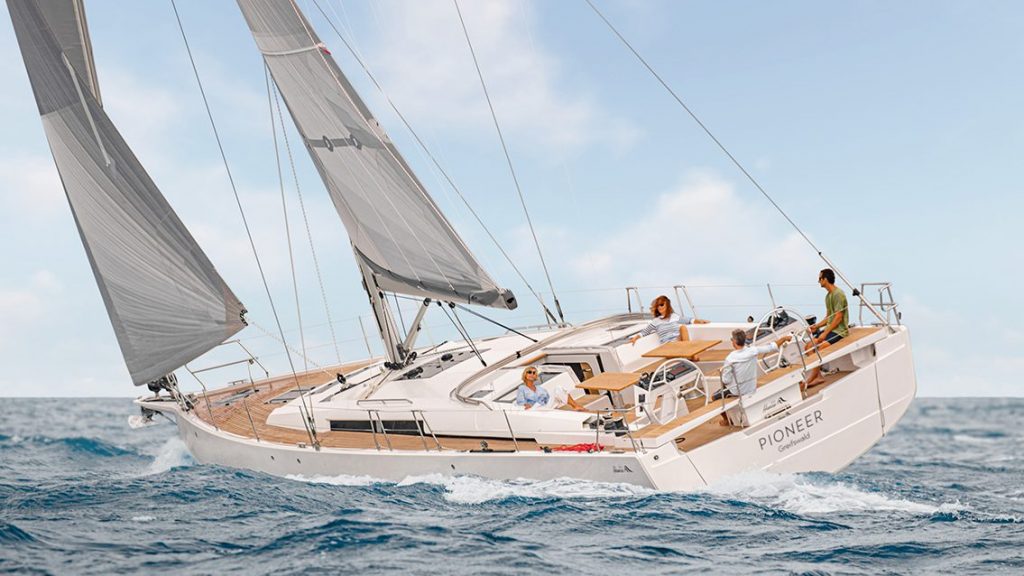 The average price of new sailboats is $250,000, with a range from $96,000 to $654,000, while the average price of used sailboats is $111,000, ranging from $19,000 to $518,000 (Improve Sailing) . It is important to note that these figures can fluctuate depending on the specific model, brand, and features that come with the boat. For instance, a 20 to 30-year-old cruising sailboat in excellent condition can cost between $30,000 and $150,000, with some luxury models exceeding $200,000 (Life of Sailing) . 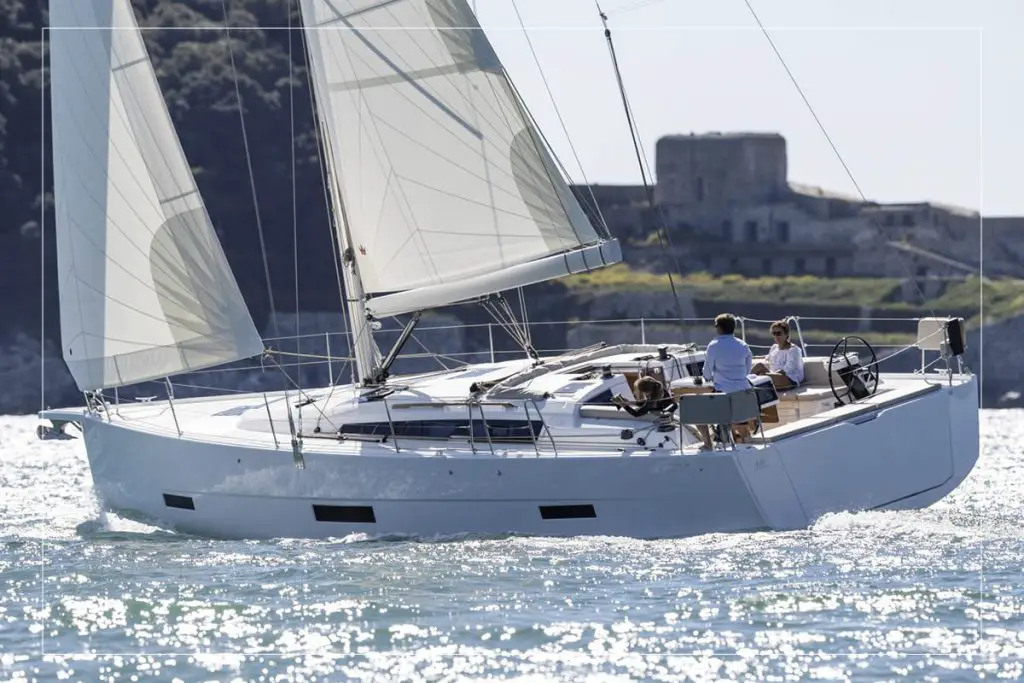 Aside from the initial purchase price, potential sailboat owners must also consider the ongoing expenses associated with maintenance, dockage, insurance, and other costs. Annual maintenance can range from $2,000 to $3,000 for most boats, with the total annual cost of ownership falling between $3,000 and $7,000 (Improve Sailing) . By understanding these expenses and being prepared for them, you can make a more informed decision when purchasing a sailboat and enjoy the many benefits of this exciting and rewarding hobby.  New vs Used SailboatsWhen it comes to purchasing a sailboat, one of the first decisions a buyer has to make is whether to opt for a new boat or a pre-owned one. Both options have their own advantages and potential shortcomings, depending on the buyer's budget, preferences, and sailing goals. New sailboats provide the advantage of being in pristine condition, with no wear and tear, and come with a manufacturer's warranty. Buyers can often customize them according to their specific needs and preferences. However, buying a new boat usually comes at a higher price, and depreciation can be a significant factor in the first few years of ownership. In contrast, used sailboats can cost considerably less, as they already have some usage and age Two Get Lost . Pre-owned boats may include additional features and equipment that were added by previous owners. These can contribute to the value of the vessel and help the new owner save on additional costs. However, used sailboats may require more maintenance and repairs than their new counterparts, which could affect the overall cost of ownership. An essential part of purchasing a pre-owned sailboat is obtaining a professional survey to assess the boat's condition and identify any potential issues. This typically costs around $500 for a 40-foot or smaller yacht Discover Boating . Finding the right sailboat ultimately depends on a balance between one's budget, specific requirements, and realistic expectations. By carefully assessing the pros and cons of both new and used sailboats, buyers can make an informed decision in line with their personal preferences, budget constraints, and long-term sailing objectives.  Size and Type of SailboatsWhen considering the cost of a sailboat, it's important to take into account both the size and the type of the sailboat. Smaller boats tend to be more affordable, while larger boats tend to carry a higher price tag. However, prices can also significantly vary within a specific type or brand of sailboat, so one should consider all factors before making a purchase decision. For example, a 22-foot sailboat may be close to $30,000 brand new, yet an older model of the same boat built in the late 1970s might be purchased for $5,500 source . Similarly, a new Islander 36' can cost nearly $150,000, while a used one can cost you around $40,000 source . Different types of sailboats may have varying costs as well. Some popular types of sailboats include: - Day Sailers: These smaller vessels are designed for short trips and are a popular choice for beginners. They have limited amenities and are typically less expensive.
- Cruisers: These mid-sized boats are equipped for extended trips and can accommodate multiple passengers in comfortable living quarters. They are more expensive than day sailers, but usually more affordable than racers or luxury sailing yachts .
- Racers: These high-performance boats are designed for speed and competition. They tend to have fewer amenities than cruisers but may be more expensive due to their specialized features and lightweight materials.
- Luxury Sailing Yachts: These high-end vessels are designed for comfort and extravagance, featuring state-of-the-art amenities and ample space for passengers. They come with hefty price tags, often costing millions of dollars.
As previously mentioned, used sailboat prices vary greatly, but on average, they tend to be around $21,000. New boats, on the other hand, can cost $60,000 and upwards source .  Additional ExpensesWhen considering the cost of sailboats, it's important to factor in additional expenses beyond the initial price of the boat. These costs can significantly impact the overall cost of boat ownership. One such expense is insurance . For new cruisers, insurance can be a considerable expense, with rates dropping the longer you own your boat. For instance, insurance can start at around 2.8% of the boat's value and later drop to 1.3% after a year of ownership (The Home That Roams) . Annual maintenance costs are another expense to consider. On average, maintenance costs for sailboats range from $2,000 to $3,000 per year, but they can be even higher for larger boats (Improve Sailing) . This includes costs for servicing, repairing, and upgrading various components of the sailboat. Other recurring expenses include: - Docking fees - Depending on the marina and location, docking fees can vary greatly.
- Equipment upgrades - From time to time, you may need to upgrade your boat's equipment for safety and comfort.
- Fuel - Although sailboats primarily rely on wind power, they still require fuel for auxiliary engines and generators.
Considering all these additional expenses, the true annual cost of owning a sailboat can range from $3,000 to $7,000 (Improve Sailing) . Keep these figures in mind when budgeting for sailboat ownership, as they can significantly affect the long-term costs involved.  Maintenance CostsThe cost of maintaining a sailboat can vary greatly depending on factors such as the size, age, and build quality of the boat. Typically, the annual maintenance cost for sailboats falls between $2,000 and $3,000, but can range from as low as $1,000 to as high as $5,000 depending on the specific needs of your vessel (Improve Sailing) . For larger boats of 30 feet and up, these costs can increase significantly, potentially reaching $7,000 or more when considering additional expenses like docking and insurance fees. It's important to keep up with regular maintenance to prevent future expenses from rising. Such maintenance tasks may include engine servicing, hull upkeep, rigging inspections, and sail assessments (Better Sailing) . In some cases, annual maintenance costs can be estimated at around 10% of the boat's value, meaning a $30,000 sailboat may cost approximately $3,000 per year to maintain (Life of Sailing) . Some common sailboat maintenance expenses include: - Haul-out and bottom painting
- Engine service and repairs
- Rigging inspection and replacement
- Sail cleaning and repair
- Electronics maintenance
- Hull cleaning and waxing
Keep in mind that the costs provided are averages, and individual sailboat maintenance expenses can vary based on factors such as usage, location, and owner preference. Prioritizing regular maintenance can help you save money in the long run by addressing potential issues before they become major problems. SeaMag's TakeThe cost of sailboats varies greatly depending on factors such as size, age, and model. New sailboats have an average price of $250,000, while used ones average at $111,000 [source] . However, older cruising sailboats in voyage-ready condition can be found for around $30,000 [source] . An example of sailboat pricing includes a new Islander 36' costing nearly $150,000, while a used one can be around $40,000. A new 26' Catalina sailboat typically costs around $80,000 [source] . While prices can range from $1,000 for a small dinghy to over $1M for a new 50ft catamaran, it's possible to find a suitable sailboat within a reasonable budget [source] . Maintenance costs play a significant role in sailboat ownership. Annual maintenance costs usually range from $2,000 to $3,000 for most boats, while the total annual cost, including other expenses, could range from $3,000 to $7,000 [source] .  Related Articles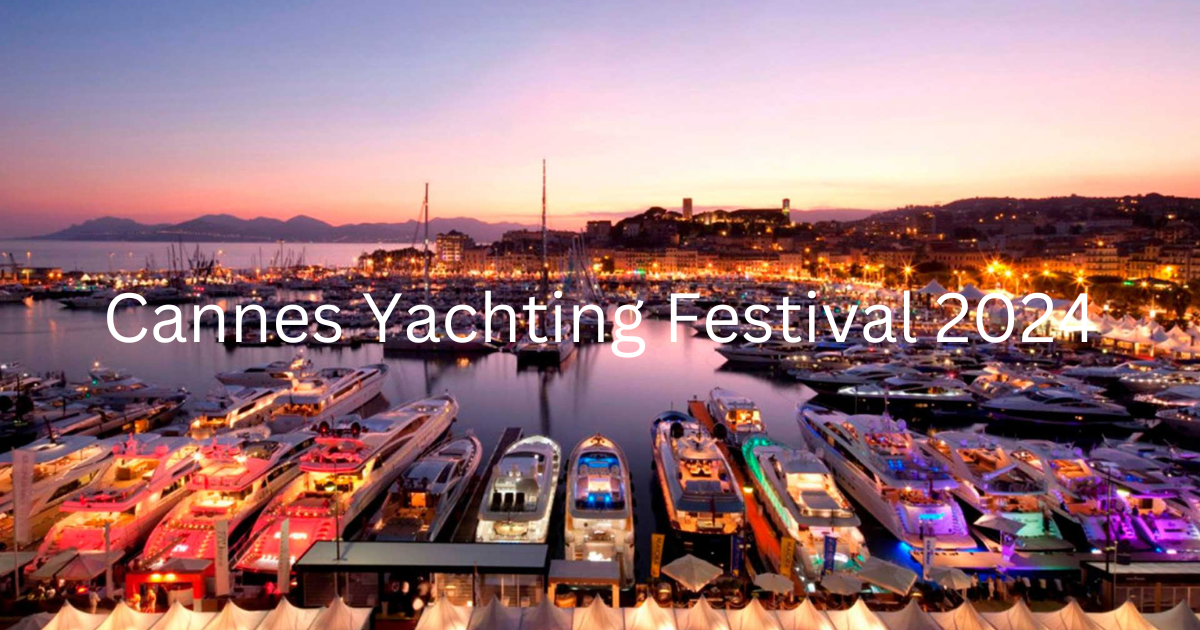 New Boats at Cannes Boat Show 2024: Cutting-Edge Vessels Unveiled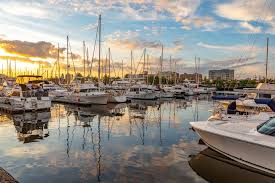 Boat Slip Essentials: Maintenance, Safety, and Rental Tips for Owners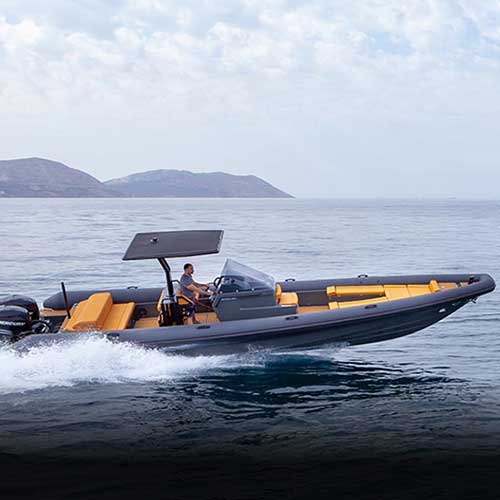 Onda Boats USA- Ups Their Excellence & Exclusivity Party Pontoon Boat: Expert Guide to Find Your Perfect Fit Sombrero Reef: A Guide to Florida's Underwater Treasure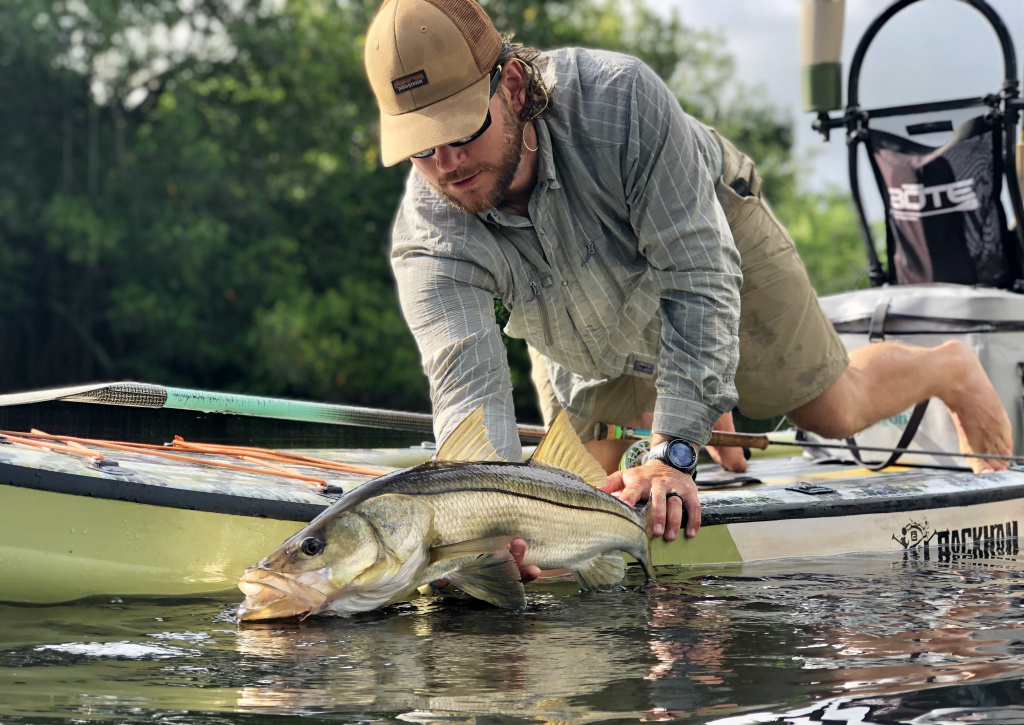 Paddle Board Fishing: Ultimate Guide for Anglers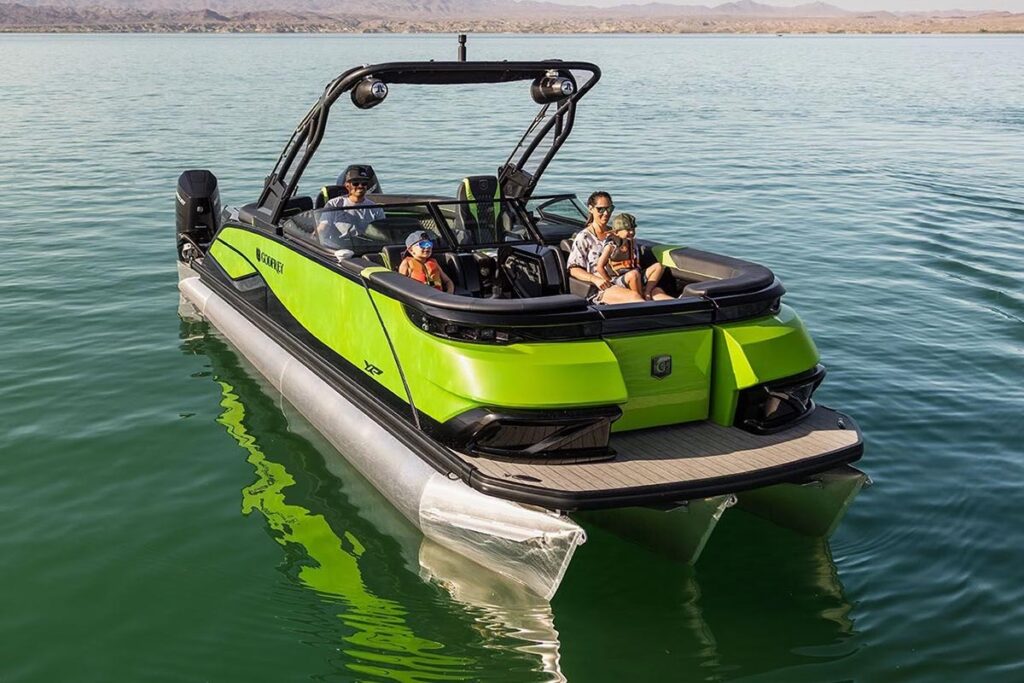 Pontoon Boat Essentials: A Comprehensive Guide for Buyers 50 Best Boat Names of 2023: A Wave of Creativity and Wit How Much is a 40 Foot Sailboat? (What You Need to Know) Sailboats offer a unique way to experience the beauty of the open water, and for those looking to take their sailing to the next level, a 40 foot sailboat is a powerful choice. But how much does a 40 foot sailboat cost ? In this article, well discuss the cost of new and used 40 foot sailboats, the factors that affect the cost, and the other associated costs that come with owning and operating a boat this size. Well also explore alternatives to purchasing a 40 foot sailboat so that you can make an informed decision about getting out on the water. Table of Contents Short AnswerThe cost of a 40 foot sailboat can vary greatly depending on the features and condition of the boat. Generally, a 40 foot sailboat can range from around $50,000 to $300,000 or more. It is important to research the specific features and condition of the boat before making a purchase to ensure you get the most value for your money. Cost of New 40 Foot SailboatsWhen it comes to purchasing a sailboat, the cost of a 40 foot model can vary greatly depending on the type, age, and condition of the boat. Generally speaking, newer models of 40 foot sailboats tend to cost more than their used counterparts, ranging anywhere from $100,000 to $250,000. This is because these boats are made with the latest technology and materials, resulting in higher quality and a longer life expectancy. When considering a new 40 foot sailboat, it is important to research the various models and manufacturers to determine which one best suits your needs and budget. Additionally, there are often discount offers on new boats, so it is worth shopping around to see if you can find a better price. It is also important to factor in additional costs such as mooring fees, insurance, and maintenance, as these can add up quickly and significantly increase the total cost of ownership. In summary, the cost of a 40 foot sailboat can range anywhere from $100,000 to $250,000 for a new model, while used boats can cost anywhere from $50,000 to $150,000. It is important to do your research and factor in additional costs to ensure that you get the best deal for your money. Cost of Used 40 Foot Sailboats When considering the cost of a 40-foot sailboat, it is important to consider the age, type, and condition of the boat. Used boats can be significantly less expensive than their new counterparts, but can still be costly. Depending on the type and condition of the boat, used 40-foot sailboats can cost anywhere from $50,000 to $150,000. When shopping for a used sailboat, it is important to inspect the boat thoroughly for any signs of damage, wear and tear, or potential issues. It is also important to check the boats maintenance record and any related documentation. Doing so can help to ensure that the boat is in good condition and that any potential issues can be addressed before purchase. It is also important to consider any additional costs associated with owning a sailboat, such as mooring fees, insurance, and maintenance. Even used boats may require some sort of maintenance or repair, and these costs can add up quickly. It is a good idea to research these fees before making any purchase and to factor them into the total cost of the boat. In short, the cost of a 40-foot sailboat can vary greatly depending on the age, type, and condition of the boat. Newer models can range anywhere from $100,000 to $250,000, while used boats can cost anywhere from $50,000 to $150,000. Additional costs such as mooring fees, insurance, and maintenance can also affect the total cost. When considering the cost of a 40-foot sailboat, it is important to consider all of these factors in order to make an informed decision. Doing so can help to ensure that you get the best value for your money and that you can enjoy your boat for years to come. Factors that Affect the Cost of a 40 Foot SailboatWhen considering the cost of a 40 foot sailboat, there are a number of factors that can affect the price. The first factor is the type of boat. Generally speaking, the larger and more complex the boat, the more expensive it will be. Additionally, sailboats designed for cruising will be more expensive than those designed for racing. The age and condition of the boat are also important factors to consider. Newer models may cost anywhere from $100,000 to $250,000, while used boats can cost anywhere from $50,000 to $150,000. Of course, the condition of the boat will affect the cost, as a boat in good condition may cost less than one that is in poor condition. In addition to the cost of the boat itself, there are other costs to consider when budgeting for a 40 foot sailboat. These may include mooring fees, insurance, and maintenance costs. Mooring fees can vary depending on the location, but can range from a few hundred dollars per month to several thousand dollars. Insurance costs can also range depending on the coverage and the value of the boat, but can average around $1,000 a year. Finally, maintenance costs should be taken into account, as they can range from minor repairs to major overhauls. Ultimately, the cost of a 40 foot sailboat is determined by a number of factors. The type, age, and condition of the boat will all play a role in determining the cost, as well as any additional costs such as mooring fees, insurance, and maintenance. When budgeting for a sailboat, it is important to consider all of these factors before making a purchase. Mooring Fees When considering the total cost of a 40-foot sailboat, one of the key factors to consider is the cost of mooring fees. Mooring fees are the costs associated with securing a boat in a marina or other port facility. Depending on the location, mooring fees can range from a few hundred dollars per month to several thousand dollars per month. In addition to the cost of the moorage itself, there may be associated costs such as electric, water, and fuel delivery that can add to the total cost. When calculating the total cost of a sailboat, it is important to factor in the potential mooring fees to get a better sense of the total cost. When considering the cost of a 40 foot sailboat, it is important to factor in the cost of insurance. Insurance is a necessary precaution to ensure that you are covered in the event of an emergency or accident. The cost of insuring a 40 foot sailboat will depend on a variety of factors, including the size and type of boat, age, and location. A larger, newer boat will likely require more expensive coverage than an older, smaller vessel. Additionally, the cost of insurance may be higher in areas prone to extreme weather or where there is a higher risk of theft. It is important to compare policies from different providers to find the best coverage for the lowest cost. Maintenance Costs When it comes to owning a 40 foot sailboat, it is important to consider the cost of maintenance. A sailboat is a complex machine with many moving parts and components that require regular upkeep. You can expect to pay for annual inspections, ongoing repairs, and any necessary replacements. Depending on the age and condition of the boat, maintenance costs can range anywhere from a few hundred dollars to several thousand. It is recommended that you budget for at least 5% of the total cost of the boat for annual maintenance. This may include changing the oil, inspecting the engine, and replacing filters, hoses, and other parts as needed. Additionally, you should factor in the cost of dockage fees and any necessary insurance for the boat. These costs can add up quickly and should be taken into consideration when determining the total cost of a 40 foot sailboat. Alternatives to Purchasing a 40 Foot SailboatWhen it comes to purchasing a 40-foot sailboat, there are a number of alternatives to consider. For those with limited budgets, renting a boat might be a better option. Renting a 40-foot sailboat can cost anywhere between $300 and $1,500 a day, depending on the type and size of the boat. This is a great option for those who just want to get out on the open water for a few days without the commitment of buying a boat. Another alternative to purchasing a 40-foot sailboat is to charter one. Chartering a boat is similar to renting, except that you can hire a captain and crew to accompany you. This can cost anywhere from $2,000 to $10,000 a day, depending on the type and size of the boat. This is a great option for those who want to experience sailing without having to worry about the details. Finally, if youre looking for a more cost-effective option, you can always join a sailing club. Many sailing clubs offer memberships that include access to boats, as well as sailing lessons and other activities. Prices vary from club to club, but they can range anywhere from $300 to $1,000 a year. This is a great option for those who want to learn more about sailing and have access to boats without the commitment of purchasing one. Final ThoughtsBuying a 40 foot sailboat can be a big financial commitment, and its important to do your research to determine the true cost. Newer boats can range from $100,000 to $250,000, while used boats can cost anywhere from $50,000 to $150,000. In addition to the purchase price, there are also mooring fees, insurance, and maintenance costs to consider. If the cost of a 40 foot sailboat is too steep for you, there are alternatives such as renting or chartering a boat for a fraction of the cost. No matter what route you choose, its important to weigh all your options to find the perfect boat for your needs. James Frami At the age of 15, he and four other friends from his neighborhood constructed their first boat. He has been sailing for almost 30 years and has a wealth of knowledge that he wants to share with others. Recent PostsWhen Was Banana Boat Song Released? (HISTORICAL INSIGHTS) The "Banana Boat Song" was released in 1956 by Harry Belafonte. This calypso-style song, also known as "Day-O," became a huge hit and remains popular to this day for its catchy tune and upbeat... How to Make Banana Boat Smoothie King? (DELICIOUS RECIPE REVEALED) To make a Banana Boat Smoothie King smoothie at home, start by gathering the ingredients: a ripe banana, peanut butter, chocolate protein powder, almond milk, and ice. Blend the banana, a scoop of...  How Much Do Sailboats Cost 2024? The Average PricesThe cost of a sailboat can vary greatly depending on a number of features, so it’s hard to give a definitive answer without knowing requirements. Although it’s common to think sailing’s for the rich , that isn’t always the case. In fact, you can pick up project boats for as little as $1! This is unusual though, so what can you expect to pay? To give a rough idea, a small, basic sailboat can start at around $10,000, while high-end, luxury boats can easily exceed $1 million. Additionally, the cost of owning and maintaining a sailboat should also be considered. This can include expenses for docking fees, insurance, repairs and upgrades, and essential sailing gear and equipment.  As an Amazon Associate, we earn from qualifying purchases. We also earn from other affiliate programs. This means we may receive a small commission on products purchased through our links at no extra cost to you. When we bought our sailboat four years ago we had no idea if we would like living aboard or how long we would want to cruise for. We knew we wanted a boat under 40ft so we could manage it as a crew of two (or even one if needs be), but bigger than 35ft so we had enough room to live comfortably. Because we had a very small budget we knew we wouldn’t be able to afford a sailboat that was fully fitted out and ready to go, so we had to factor in upgrades and maintenance that we would complete ourselves as and when we could afford to. We bought our 38ft sailboat for under £30,000, which was one of the cheapest sailboats that was ‘ready to sail’ in the size and age range at the time. Just like houses, sailboats go and up and down in price based on demand, and in today’s market it is much harder to find a boat like this in that price range. So now that you have a bit of context, let’s dive into the factors that affect the cost of a sailboat and some average prices below. W hat Factors Affect The Cost Of A Sailboat? Before buying a sailboat you will want to consider many different factors, such as what you want your sailboat for, where you intend to sail it and how many crew you are likely to have onboard. You will want to look at the existing equipment onboard and make a list of extras you will need to fit in order to make it meet your requirements. These extra costs can quickly add up! You should also factor in any maintenance that needs to be done before you start sailing. Let’s take a look at some of the main factors that impact the price of a sailboat. New or Used This is an obvious one. Used sailboats are a lot cheaper than brand new versions. Sailboats are similar to cars and lose their value over time, no matter how much work you put into them. The most common opinion is that new sailboats lose their value on a bell curve, and you will make the most of your investment if you sell a new boat within four years. Buying a much older boat is cheaper initially, but may cost you ten fold in maintenance and upgrades if it hasn’t been looked after well by the previous owner. You should always use a well regarded surveyor before buying a sailboat to make sure you are paying a fair price. Larger sailboats typically cost more than smaller ones. You can buy a small used sailing dinghy for around £1000, which will be suitable for hobby sailing for a few hours on lakes or close to shore in calm weather. This is a great option if you’re keen to learn to sail on a small budget. Here are a few price comparisons on new boats of different sizes. Average Prices Of 22ft yachts - Catalina 22 Sport: $27,000 + VAT
- Marlow Hunter 22: $30,000 + VAT
- Marblehead 22: $84,000 + VAT
Average prices of 40ft – 45ft yachts - Lagoon 40: $400,000 + VAT
- Hanse 418: $200,000 + VAT
- Ovni 445: $600,000 + VAT
Monohull or Multihull  With two engines, two hulls and a lot more space multihulls fetch a premium. In recent years they have become more popular than ever, and therefore they are a lot more expensive both new and used than monohulls. They are also more expensive to upkeep and more expensive to run. Well-known, high-end brands often come with a higher price tag. As you can see from the chart above, even sailboats of the same or very similar size can vary hugely in price. This is partly down to the reputation of the brand and boat manufacturer. If the boat has the reputation of being of excellent build quality then it will undoubtedly demand a higher price tag! Additional amenities and technology can increase the cost. If you’re buying a new boat then it will likely come with all the essentials like depth souder and wind gauge (or this may be something you will need to add on as an extra). Used boats will come with whatever they come with, which may mean outdated or broken equipment, or none at all. When we bought our used boat we drew up a spreadsheet of all the equipment we considered essential and we added missing equipment onto the cost of the sailboat, so that we knew how much extra we would have to spend after purchase. Some things, like our sailboat watermaker , might not be essential to others but have changed our lives aboard. Even things like our lithium marine batteries would now be on our ‘essentials’ list, as they are so power and cost effective compared to the alternatives. ⚡ We use BattleBorn batteries and recommend them highly. You can check them out here. ⚡ A used sailboat may be less expensive, but will almost certainly require more maintenance and upkeep. You can tackle a lot of boat maintenance yourself with the help of YouTube sailing channels and a decent sailboat toolkit , and this will keep costs down considerably. Overall, it is important to carefully consider all factors and do thorough research before making a purchase decision for a sailboat The Average Cost Of A New Cruising Sailboat We’ve classed a cruising boat as one you could live on comfortably as a couple, so ranging from around 38ft to 50ft. On average, a new cruising sailboat can cost anywhere from $100,000 to over $1 million . Some popular brands, such as Beneteau and Jeanneau, offer models in the $200,000 to $400,000 range. Luxury cruising sailboats from well-known brands like Hanse or any catamarans can easily exceed $500,000. Of course, the cost will also depend on the size and features of the boat. A smaller, basic cruising sailboat may be closer to $100,000 while larger boats with more amenities can easily surpass the million-dollar mark. Keep in mind that these prices do not include additional expenses for maintenance and upkeep. Here are some examples: - Beneteau Oceanis 40.1 : $300,000 + VAT
- Jeanneau Sun Odyssey 410 : $400,000
- Amel 50: $1,100,000 + VAT
- Hallberg Rassy 57: £1,400,000 VAT
Used Cruising Sailboat Prices The cost of a used cruising sailboat will depend on factors such as age, condition, and previous ownership. A well-maintained, newer model used sailing boat can range from $50,000 to over $200,000. Older boats or those in need of repairs may be less expensive, but require more investment in upkeep and maintenance. You could pick up a used 38ft sailboat for around $40,000, though it will likely need some attention before it is ready to sail. It is important to thoroughly inspect a used sailboat before purchasing and factor in potential repair costs. As with buying a new boat, the cost of owning and maintaining a used sailboat should also be considered. Overall, the price of a used cruising sailboat can vary greatly and it is hard to give an average price, but expect to pay around $50,000 to $100,000 and then extra for maintenance. - Tayana 37: $30,000-90,000
- Moody 44: €60,000-100,000
- Lagoon 380: $150,000-350,000
- Jeanneau Sun Odyssey 42: $130,000-200,000
- Ovni 445: $300,000-500,000
- Hans Christian 48: $120,000-180,000
How Much Does A Small Sailboat Cost?Small sailboats, also known as dinghies or day sailors, can range from around $10,000 to $50,000. This cost will depend on factors such as size, brand, and features. Used small sailboats may be less expensive, but it is important to carefully consider the condition and potential repairs that may be needed. A well-maintained, newer model used dinghy or day sailor can range from $5,000 to $20,000. Again, small catamarans tend to be more expensive than monohulls. In addition to the initial purchase cost, owning a small sailboat also includes expenses for storage, maintenance, and necessary gear and equipment. - Hobie 16: $11,000 + VAT
- Catalina 22 Sport: $28,000 + VAT
- Catalina 22: $3,000-22,000
- Cape Dory 25: $2,000-10,000
- Catalina 27: $4,000-15,000
- Bristol 27: $3,000-10,000
How Do People Finance Sailboats? Sailboats can be a major financial investment, and many people choose to finance their purchase through a loan from a bank or other lending institution. It is important to carefully consider the terms of the loan and make sure that monthly payments fit into one’s budget. Some boat dealers may offer financing options or payment plans. However, it is important to thoroughly research these options and compare them with outside lenders before making a decision. In some cases, people may also use savings or sell assets in order to pay for a sailboat. In addition to the initial cost of purchasing a sailboat, it is important to also factor in expenses for maintenance, storage, insurance, and necessary gear and equipment. Owning a sailboat can be a rewarding experience, but it is important to carefully plan for all associated costs before making a financial commitment. You can find out the cost of owning a sailboat before you decide to buy, and don’t forget it is possible to make money living on a sailboat to keep the kitty topped up. Overall, the cost of owning a sailboat varies greatly and depends on personal preferences and budget. It is important to thoroughly research all financing options and consider the ongoing expenses before committing to a purchase. How Much Does It Cost To Build A Sailboat? The cost of building a sailboat can vary greatly depending on the size and complexity of the boat. Hiring a professional to build a custom sailboat can range from $50,000 to over $200,000. Alternatively, some people may choose to build their own sailboat with materials and tools. This option can be less expensive, but also requires considerable time and effort. The cost of building a sailboat oneself will also depend on the materials used and any necessary equipment or hired help. Overall, the cost of building a sailboat is quite personal based on budget, sailing needs, and willingness to DIY or hire professionals. Remember that if you choose to build the boat yourself you will need a covered space big enough to do so, and a way to transport it to water when you’re finished. All these costs can add up considerably! Where Is The Cheapest Place To Buy A Sailboat? Prices can vary by region and market demand. When we were first looking for a sailboat we realised they were a lot cheaper in the US. The only problem with buying there was that we wouldn’t have been able to get a visa long enough to give us time to work on the boat before leaving the country. Another top tip is to look for sailboats in places that are ‘jump off points’. For example, many people will cross the Atlantic and sell after achieving their dream of crossing an ocean, or reach the beginning of a daunting ocean crossing like Panama to cross the Pacific, and realise it’s something they don’t have an appetite for. There are also cheaper boats in more remote, harder to get to places. Some people may choose to purchase their sailboat in a different country or region in order to find a lower price, but it is important to factor in any necessary transportation and import fees. Keep an eye on prices of boats around the world to get a good idea of where you can snap up the best bargain. Conclusion: How Much Do Sailboats Cost?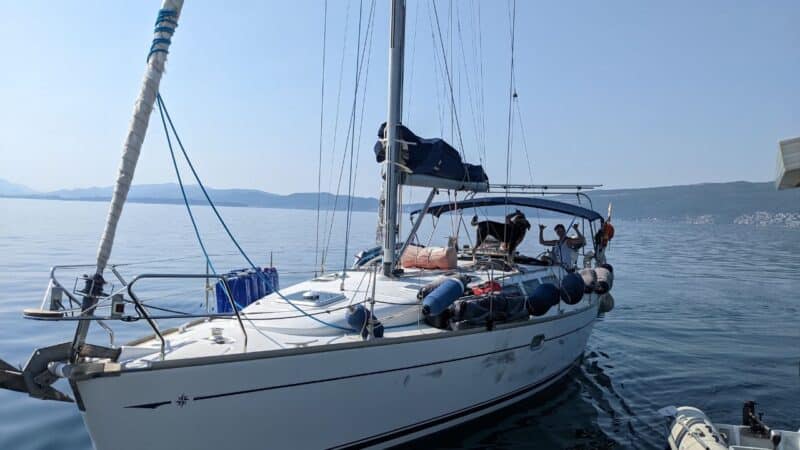 All in all, the cost of a sailboat can vary greatly depending on factors such as size, age, and whether it is purchased or built. It is important to thoroughly consider all financing options and ongoing expenses before making a commitment to purchase or build a sailboat. Find out how much new sails cost as an example of something you might have to budget for when purchasing a new sailboat. Ultimately, owning a sailboat can be a rewarding experience but careful planning is necessary for successful budgeting and enjoyment. If you’re looking for more sailing or liveaboard tips then follow us on social media to stay up to date with our latest articles. Happy sailing! Similar Posts 13 Best Small Catamarans For Cruising 2024 How To Keep A Sailing Log What To Do When You’re Stuck At Home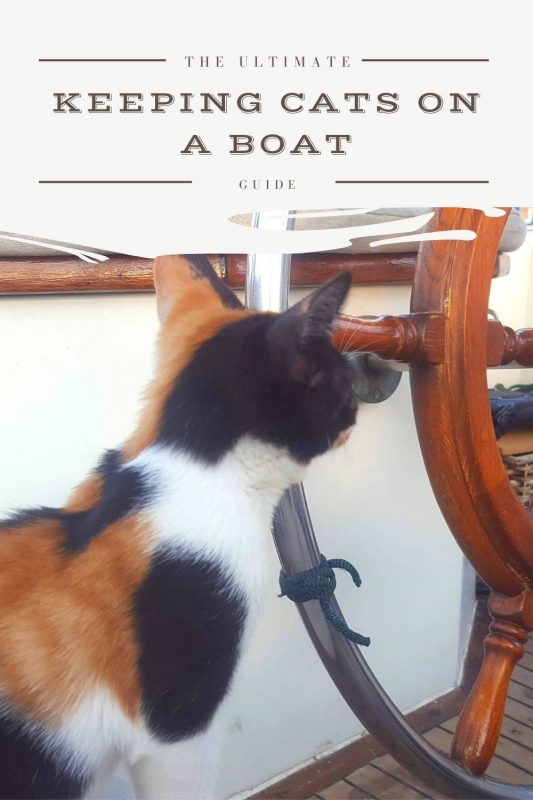 Cats On A Boat: The Ultimate Guide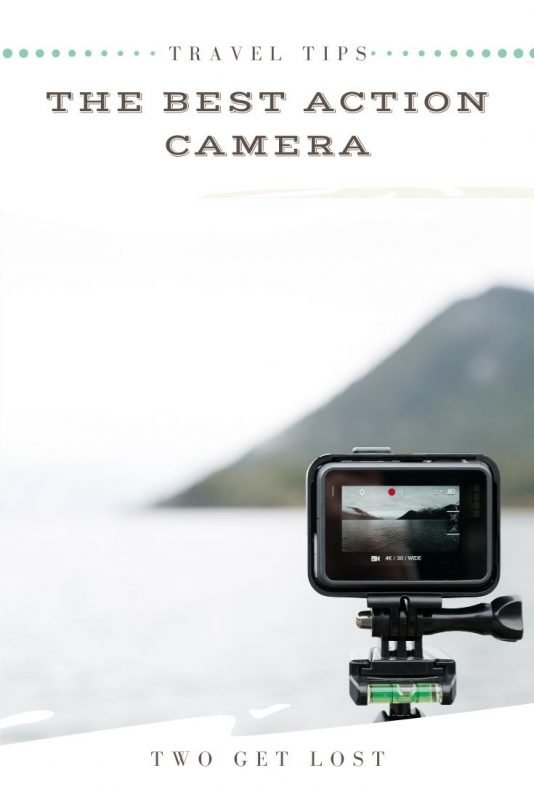 The Best Action Camera For Travel Vloggers 2024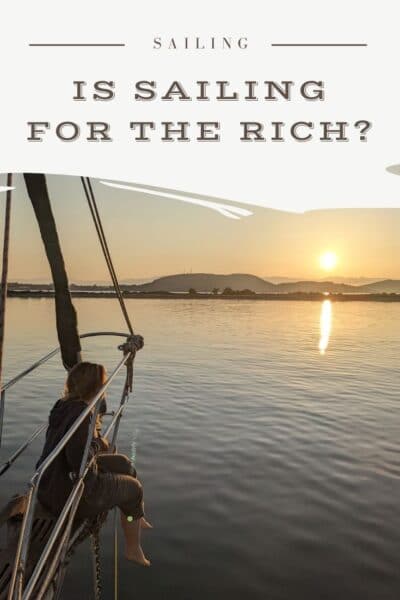 Is Sailing For The Rich? NORDIC TUGS NORTHERN MARINE BULLFROG BOATS MY YACHT WORTH? FEATURED LISTINGS YACHTS BY BUILDER YACHTS BY LOCATION YACHTS BY TYPE WHY LIST WITH US - BUYING A TRAWLER YACHT
- TRAWLER BOAT BUYER'S GUIDE
FT LAUDERDALE MARINA DEL REY SAN FRANCISCO BAY VICTORIA B.C.FLOTILLA EVENTS SEATTLE SAILING ACADEMY How Much Does An Average Sailboat Cost? If you have ever spent a glorious afternoon on the water on a sailboat, you know what a thrill it is. Sailing represents freedom, harnessing the wind to drive you forward. It is a quiet time on the water and developing the skills to sail well can be addicting. It doesn’t matter if you want to simply go out for a few hours, enjoy an occasional overnight or weekend cruise, join the racing crowd and be in the frenetic chaos at the starting line, or dream of tropical sunsets in paradise far over the horizon. Sailing has great appeal to those romantic souls who discover its pleasures. And sailing can be a lifelong passion. The average cost of a sailboat for sale will vary all over the board, given the many sizes, complexities, and types of sailboats out there. New or used, they can range from small, open daysailers to large catamarans that have multiple staterooms and accommodations for the entire family. Modern speedy monohulls will provide the adrenaline rush for those athletic enough to push them to their limits, while heavier, slower sailboats provide a comfortable platform to sail safely around the world, or wherever your dreams take you. A 22-foot sailboat may be close to $30,000 brand new, yet an older model of the same boat built in the late 1970s might be purchased for $5,500 or less. A shiny new 48-foot catamaran will cost you well over $1,000,000, while a similar boat built in 2008 may be purchased for $425,000, and be better equipped. This new-versus-used situation is going to be true for all sailboats, no matter if they are monohull, catamaran, motorsailer, daysailer, or racing machine. Is it best to always buy a brand-new boat? That depends. The key is to understand that there will be additional costs that may not be obvious. (Seen below: The Hanse 315 is an approximately 30-foot sailboat that costs between $100,000 and $150,000 when purchased new.)  The docks at all major boat shows showcase the diverse range of sailboats to satisfy everyone’s ideas, and it is easy to fall in love with one boat after another. Sailboats are funny like that, so similar, yet so different. How to choose the right one often comes down to what one can afford. That sail away special during the show may be enough to pull out your checkbook, but there is more to it than just the sale price. There is the obvious need to keep it somewhere, insure it, and maintain it. Relevant: Frequently Asked Questions About Owning A Sailboat One must have realistic ideas of what they are looking for, and an experienced yacht broker will be of great value to help determine that. A broker is key to weave the person’s sailing experience with the kind of sailing they hope to do, while working within their budget. But once the basic plan is in place, it becomes a fun adventure to look and learn from as many boats as possible. Some will appeal straightaway, for any number of reasons, while others may be intimidating in terms of size, complexity, and finishes that demand expensive maintenance. Boats with highly varnished brightwork will be much more labor intensive than white fiberglass, minimal interior appointments, and just basic systems. Low maintenance boats are literally a wash and wear proposition that live just fine during the season on a mooring. For instance, most new production boats are built to the level of completeness necessary to satisfy most buyers. It is sufficient for how most people will use it. That is smart and intentional. It makes no sense to fully outfit a sailboat to the level where it can safely cross oceans, because the builders already know few owners have that desire and doing so drives up the costs significantly. So, the manufacturers complete the boats to around 80 percent of what would be necessary for a passagemaker ready to conquer the world. If you have long-distance cruising plans, keep that in mind. (Seen below: This is a very interesting video from a couple that lives on their sailboat. It gives you an idea of what you 'could' equipped with.) What new boat buyers soon learn is the extent of associated costs that necessarily increase as the boats get bigger, more complex, with more systems for comfort and ease of sail handling…all intended to provide a higher quality living aboard experience. A partial list of such items may include : • Diesel engine propulsion system, including transmission, shaft and seal, and propeller • Additional standing and running rigging, such as whisker pole and inner forestay • A sail inventory beyond regular sails, such as spinnakers, Code Zero, and special purpose sails • Some form of renewable anti-fouling protection for hull and propeller • Batteries, which often must be replaced every six years or so • Ground tackle, which may include electric windlass, chain/rope rode and heavier anchor(s) • Navigation electronics and autopilot • Safety gear, such as PFDs, life raft, EPIRB, flares, harnesses • Dinghy and perhaps a gas or electric outboard • Comfort appliances, such as refrigeration/freezer, air conditioning • Generator • Bow thruster • Exterior canvas for bimini and covers for sun and weather protection • Additional fenders, dock lines, shorepower cords One will also have to put together tool bags to maintain all the above, and there needs to be storage for these and other special tools that find their way aboard. In a harsh saltwater environment, tools typically must be replaced every so many years. (Read Our 4-Part Series On Boat Tools ) On a new or almost new boat, it is generally agreed that 10 percent of the value of the boat will be needed for recurring annual maintenance costs, for things like varnish, bottom paint, zincs, cleaning supplies, fuel filters, oil, grease, and other consumables. If one can do the work themselves, it will be much cheaper than paying the going yard rates. On an older boat, the budget for keeping things working will generally be higher, unless the boat is simple and does not have lots of winches, systems, or complexity. The gaff-rigged Tahiti ketch comes to mind, as does the Westsail 32. Once a boat reaches 10+ years, things just start to wear out, hoses get brittle, plumbing cracks, wires corrode, pumps fail, and seacocks deteriorate. While older sailboats have the obvious appeal of a low initial price, a false sense of value can be shattered when it is determined that the engine must be replaced, all the leaking ports need major work, or it’s time for a new mast and rigging. Old roller furling gear goes into the dumpster. That romantic cutter, all covered in teak decks and gleaming brightwork will cost you thousands of dollars to maintain the varnish. Unless you want to do it yourself, of course, but most find it tedious and time consuming. Many younger people go the old, fixer-upper route, and they figure they can make it work while learning new skills. But they are still in their prime, don’t mind a little discomfort by roughing it, and their dreams and vision cuts through the cloud of difficulties to get the boat that much closer to begin living the dream. There are scores of YouTube channels that celebrate this lifestyle theme of living the experience. While there are compelling reasons to buy a new boat, the sweet spot for managing the cost of buying a sailboat, I believe, is to find one that is neither brand new nor very old. Searching for a boat that fits one’s needs and is under 10 years old can result in a purchase that has the best all-around value. The boat’s propulsion, plumbing, steering, and electrical components are still working, the equipment still current and good for the foreseeable future. One does not expect the same service from an autopilot that is 30 years old, assuming it even works. Look at the popular Beneteau Oceanis series sailboats, for example. Keeping it under 10 years old, one finds a 2015 Oceanis 41 around $178,000, and a 2018 Oceanis 41.1 at $198,000. These are not bad prices for newer boats that are also well equipped. The same holds true for other main brand manufacturers, such as Jeanneau and Hanse . Many of the classic, proven sailboats are still out there, though, and worth a look if you can find one. While the design is now 50 years old, the Valiant 40/42 remains a popular choice for cruisers. The older, original Valiant 40s come on the market for around $75,000, while the newer V42s built in Texas still hold their value about $225,000. The same is true with established designs from other top yards, such as the Swedish and English builders of Hallberg-Rassy, Malo, Rustler, and Oyster. (Seen below: This 2000 Jeanneau 45 Sun Odyssey is a good example of a used sailboat on the brokerage market. It is listed for under $200,000.)  For performance and fun, a five-year-old J/22 can be bought for $9000 and offers a lot of sailing pleasure in a small package. A 10-year-old J/105, a more capable sailboat, is right around $70,000. Not surprising, the age of the boat has as much to do with the asking price as its condition and how well it is equipped. A 1977 Catalina 30 can be purchased for $15,000, while a five-year-newer boat is listed for $25,000. A Catalina 30 built in 1993 is asking $29,000. Ultimately, the cost of buying a sailboat must be balanced with the value it brings. Newer boats aren’t just fresher and cleaner, they are arguably better boats, as the technology of boat building has made great strides in improving the product. Vacuum infusion is now commonplace and is far better for building a strong hull that is lighter than traditionally hand laid fiberglass, where it was difficult to control the resin to glass ratio. Diesel engines are now much cleaner, lighter per horsepower, have better fuel economy, and overall, propulsion systems have greatly improved with electronic controls. The same is true for most other components, from appliances to steering systems. And today’s electrical systems are lightyears better than what is found in older boats. LED fixtures, lithium-ion batteries, regeneration gear, and much improved wiring practices add to the marvelous systems of today. Across the board, hull shapes have changed, and they are more powerful, more easily driven, and the sailing systems that power them are also much improved, while being safer and easier to use. Some builders, such as Tartan Yachts, even promote that they have put the fun factor back into sailing, as their sail handling systems are a joy to use. If you are ready to join the sailing world, find yourself an experienced broker to share your ideas and plans, and get real. Dreaming is fun but being at the helm of your own sailboat is better than any fantasy. The world awaits. Good luck. Enjoy these other boating and cruising articles: - The Unexpected Side Of An Aging Sailor
- What Is The Safest Sailboat?
- Is Sailing A Cheap Hobby?
- What Are The Different Types Of Sailboats?
- How Big Of A Sailboat Can One Person Handle?
- What Is The Best Size Sailboat To Live On?
- Moving From A Sailboat To A Trawler
- Sometimes It's All About Simplicity
- The Bucket: A True Story
- Essential Supplies For Extended Cruising
- The Exhausting Need To Keep Up With New Technology
- Have A Backup Plan!
- Northern Marine Exhaust Systems Are Better
- Cruising Boats Come Of Age
- Changing Rituals
- Did Wisdom Come To The Ancient Mariner?
- Going World Cruising? Not So Fast
- What Engines Are In Your Boat?
- Letting Go But Still In Control
- Learning To Handle A New Boat
- Improving The User Experience
- A Paradigm Shift In Cruising
- Consider Buddy Boating
- A Matter Of Staying Safe While Boating
- Should I Carry A Gun While Cruising?
- A Boater's 3-to-5 Year Plan
- Provisioning Your Yacht For Extended Cruising - Bahamas
- Provisioning Your Yacht For Extended Cruising - Alaska
- The Evolution Of The Trawler Yacht
- Getting Ready For The Great Loop
- A Winning Great Loop Strategy
- Tips For Cruising South
- The Great Loop
 Time For Spring Commissioning: But Have You Thought Of This?View Article  Insuring Your Boating Dream The Ultimate Trawler Boat Buying GuideFall boat show 2024 preview event in annapolis, sausalito boat show 2024, annapolis sailboat show 2024, annapolis powerboat show 2024, nimbus boats featured at trawlerfest baltimore 2024, nyba fall boats afloat show 2024, san diego international boat show 2024, california yacht club open house & boat show, office locations, pacific northwest. Shilshole Marina 7001 Seaview Ave NW, Suite 150 Seattle, WA 98117 ANACORTES - SALESCap Sante Marina 1019 Q Avenue, Suite A&B Anacortes, WA 98221 ANACORTES - SERVICEMarine Parts / Service Center 2915 W Avenue Sun Harbor Marina 5060 N Harbor Dr, Suite 155 San Diego, CA 92106 SAN FRANCISCO BAY AREAMarina Village Yacht Harbor 1070 Marina Village Parkway, Suite 109 Alameda, CA 94501 MARINA DEL REY, CAMarina del Rey 13900 Marquesas Way, Suite 6002 Marina del Rey, CA 90292 FORT LAUDERDALEFort Lauderdale 1535 SE 17th St, Suite #103B Fort Lauderdale, FL 33316 Safe Harbour Old Port Cove 116 Lakeshore Dr. North Palm Beach, FL. 33408 Annapolis Harbor 7350 Edgewood Road Annapolis, MD 21403 InternationalPhilippines. Virtual Brokerage Office  - Explore boats
- Text +1 910-447-2456 Call +1 910-447-2456
Sailo's Boat CalculatorThe Sailo Boat Calculator is a tool that allows you to explore, predict, and plan costs and revenues associated to boat ownership. The most important user inputs can be found on the left side of the Cost of Ownership tab. The calculator has built-in models that compute costs as a function of the information provided. The calculator is organized in multiple tabs that show costs breakdown and allow for detailed customization. For example, the fuel cost tab computes fuel consumption based on the type and size of your boat, estimated HP, and average current gas prices. To make this calculation more accurate you can enter a more exact fuel consumption for your boat and more accurate local gas prices. The last two tabs are probably the most interesting. The Charter Profit section estimates the income your boat can generate on a platform like Sailo based on charter rates and days rented. Of course we increase maintenance costs due to chartering based on the number of extra days on the water. The Rent vs Buy tab shows a comparison between renting and owning an identical boat to find which option is the most economical and by how much. Note: we assume identical fuel consumption and cost for both rental and personal use. Read more about it here . - COST OF OWNERSHIP Click tabs below to see costs breakdown
- CHARTER PROFIT Profit from chartering your boat
- RENT vs. BUY Cost of renting a similar boat
Maintenance- TOTAL
- Financing
- Insurance
- Taxes
- Docking
- Maintenance
- Fuel
- Addons
- Other
 Basic boat information- Costs Summary
- Costs Breakdown
- Costs by year
- Tax Summary
- Taxes - States comparison
Income from CharteringCost of renting a similar boat. - Own vs Rent vs Days used
- Own vs Rent Costs per Year
- Boat type
- Price today
- Boat length
- Boat build year
- Days used per year
- Boat location
- Boat storage state
- Fuel type
- Will charter boat
- Days in charter
- Rental rate
- Years to analyze
Tax by stateRenting vs owning (per year), calculator feedback, sailo boat ownership calculator, thank you for taking time to give us feedback. you feedback is important in improving the accuracy of the calculator results., the results for my boat were reasonable, ease of use, the calculator is easy to use and understand, the calculator design is clean and appealing, the calculator is useful. - FAQ and Policies
- Accessibility Statement
- Boat Rentals
- Boat Calculator
- Discover Boating
- Community questions
- Referral Program
- British Virgin Islands
- La Paz, Mexico
- Cabo San Lucas, Mexico
- Key Largo, FL
- St. Vincent and Grenadines
- New Sailboats
- Sailboats 21-30ft
- Sailboats 31-35ft
- Sailboats 36-40ft
- Sailboats Over 40ft
- Sailboats Under 21feet
- used_sailboats
- Apps and Computer Programs
- Communications
- Fishfinders
- Handheld Electronics
- Plotters MFDS Rradar
- Wind, Speed & Depth Instruments
- Anchoring Mooring
- Running Rigging
- Sails Canvas
- Standing Rigging
- Diesel Engines
- Off Grid Energy
- Cleaning Waxing
- DIY Projects
- Repair, Tools & Materials
- Spare Parts
- Tools & Gadgets
- Cabin Comfort
- Ventilation
- Footwear Apparel
- Foul Weather Gear
- Mailport & PS Advisor
- Inside Practical Sailor Blog
- Activate My Web Access
- Reset Password
- Customer Service
  Blue Jacket 40 Used Boat Review Catalina 270 vs. The Beneteau First 265 Used Boat Match-Up Ericson 41 Used Boat Review Mason 33 Used Boat Review How to Create a Bullet-Proof VHF/SSB Backup Tips From A First “Sail” on the ICW Tillerpilot Tips and Safety Cautions Best Crimpers and Strippers for Fixing Marine Electrical Connectors Polyester vs. Nylon Rode Getting the Most Out of Older Sails How (Not) to Tie Your Boat to a Dock Stopping Mainsheet Twist Fuel Lift Pump: Easy DIY Diesel Fuel System Diagnostic and Repair Ensuring Safe Shorepower  Sinking? Check Your Stuffing Box What Do You Do With Old Fiberglass Boats? Boat Repairs for the Technically Illiterate Boat Maintenance for the Technically Illiterate Whats the Best Way to Restore Clear Plastic Windows? Stopping Holding-tank Odors Giving Bugs the Big Goodbye Galley Gadgets for the Cruising Sailor The Rain Catcher’s Guide Sailing Gear for Kids What’s the Best Sunscreen? UV Clothing: Is It Worth the Hype? Preparing Yourself for Solo Sailing R. Tucker Thompson Tall Ship Youth Voyage On Watch: This 60-Year-Old Hinckley Pilot 35 is Also a Working… On Watch: America’s Cup On Watch: All Eyes on Europe Sail Racing Dear ReadersIsland Packet Yachts and designer Tim Jackett teamed up to create the Blue Jacket 40 performance-cruiser. When classical musicians start playing rock and roll, fans take note. When their first song’s a hit, everyone listens to the lyrics. Bob Johnson, Bill Bolin, and the Island Packet Yachts (IP) crew have decades of experience delivering traditional cruisers to appreciative owners, but IP’s newest player has increased the tempo. For more than 30 years, long keels, internal ballast, heavy displacement, attached rudders, a beige hull, and a headsail-handling, self-tacking jib boom have defined the Island Packet fleet. But when the IP crew teamed up with performance-oriented designer Tim Jackett, all bets were off, and the switch from perpetual beige to a dark blue hull was just the beginning. Starting with a clean slate, the collaborative design effort led to the launch of a very different cruiser. Creator of many C&C Yachts and Tartan Yachts designs, Jackett puts more emphasis on light-air sailing and upwind performance than past IP designers. Island Packet founder Bob Johnson made sure that the accommodations worked at anchor and at sea. At times, the dialogue was probably filled with internecine debate over issues ranging from foam core choice to the need for solid acrylic countertops. But the quest stayed focused on a best-of-both-worlds sailboat, and at first glance, the rig dimensions, no-nonsense deck layout, comfortable interior, and efficient hull/deck proportions seem to have hit the mark. Built in IP’s Largo, Fla., facility, the Blue Jacket 40 (BJ40) is an Island Packet cousin with fleeting family resemblance. The title block attributes the design to the complementary tag team of Tim Jackett and Bob Johnson N.A. By the time the development was complete, the traditional Island Packet’s long keel had morphed into a fin and bulb (5 feet, 9 inches or 7 feet, 10 inches), a couple tons of weight had been shed through a commitment to using Divinycell foam core and resin-infused FRP hull and deck construction; less ballast was used more efficiently. Island Packet’s signature attached rudder was eschewed in favor of a high-aspect-ratio spade rudder, while another IP badge, the self-tacking Hoyt jib boom, survived the design overhaul. DESIGN DEVELOPMENTJackett was the lead proponent for change and had hold of the tiller during the hull design development. Much of his ground-breaking prior success revolved around adding a performance edge to mainstream cruising boats. During his tenure as president and lead designer at Tartan and C&C, Jackett focused on building club racers that could handle a little cruising and cruisers that had enough rig and sail area to put the pleasure of performance back in the game. When the opportunity arose, Johnson and Jackett considered collaborating on a performance cruiser as an adjunct to the Island Packet lineup. Jackett envisioned a moderate, wedge-shaped canoe-body hull with a long waterline, plumb bow, and enough dead rise (V-shape) forward to smooth out the ride and lessen the slamming found aboard more extreme race-boat hull shapes. When the collaboration began in earnest, the goal was to reduce weight and increase sail area while engineering to Category A (Ocean) CE standards. Johnson has played a key role in the development of CE standards and is quick to point out the value of minimizing down-flooding potential, maximizing righting moment when deeply heeled, and delivering a stable boat. The Blue Jacket 40 carries a CE Stability Index (STIX) number of 40, well into the A category, which begins at 32. Add to this the well-engineered approach to construction, and its clear that a firm foundation has been laid for an able under-sail, seagoing cruiser. CONSTRUCTIONTo build the Blue Jacket 40, the IP factory adopted the resin infusion and foam core construction approach. A low-void content, high fiber-to-resin ratio laminate was achieved by vacuum infusing vinylester resin into the biaxial and quadraxial e-glass reinforcement, creating a stiff, strong, foam sandwich structure. Both the hull and the deck were laminated in one-part molds, eliminating secondary bonds. The core was tapered to solid fiberglass in high-load areas such as where hardware attachments were made or keel-bolt loads were focused. A big upside to resin infusion is the way it forces resin into kerfs (checkerboard-like slots in the foam), allowing it to conform to compound curves. 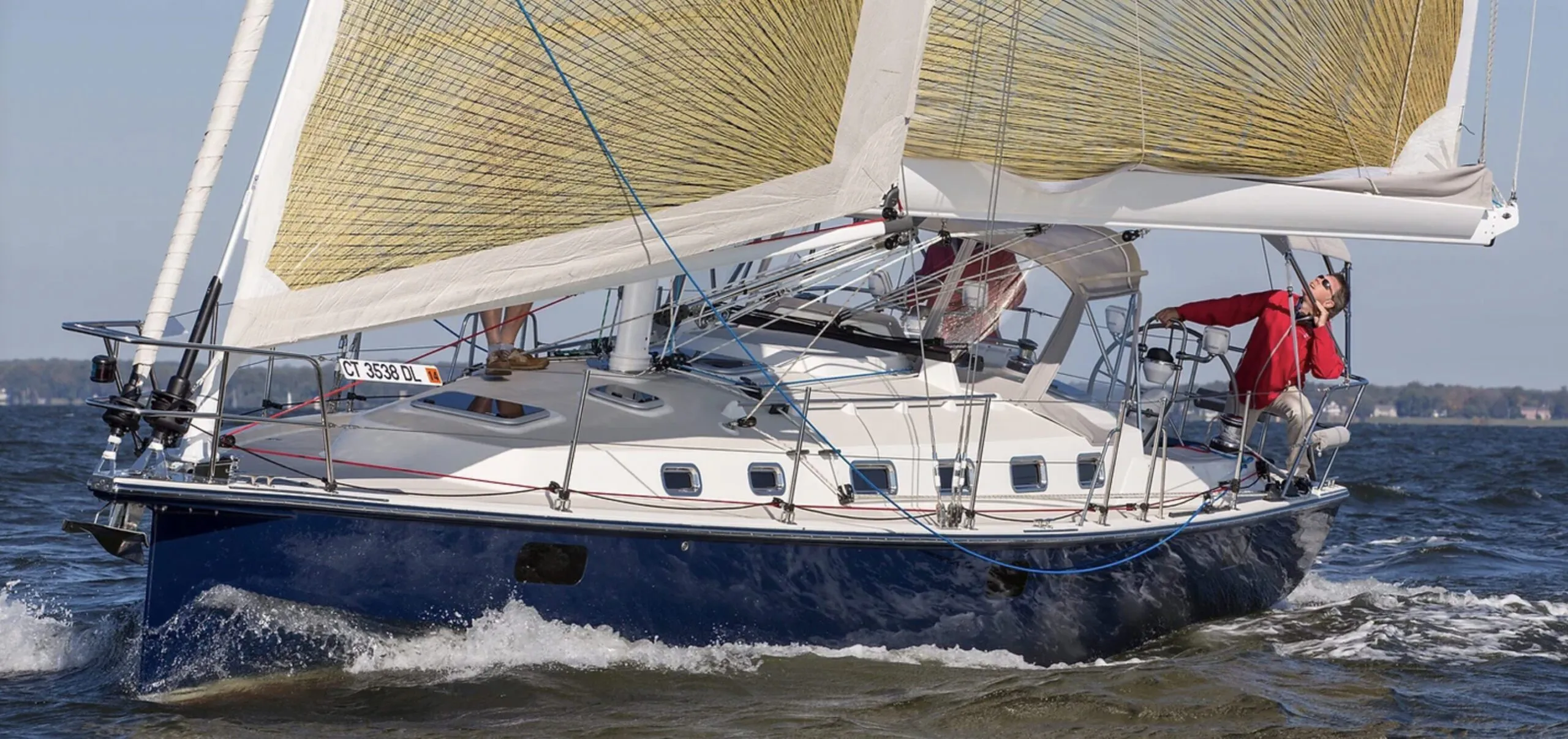 Instead of encapsulating ballast in a long run of keel, a well-proven Island Packet approach, the new design called for external lead ballast, which offers several advantages to the cruising sailor (PS, November 2012). The fin and bulb design developed more righting moment with less ballast by placing much of the lead in an anvil-shaped bulb at the very tip of the NACA foil-shaped keel. J-shaped, stainless-steel keel bolts were cast into the lead and bolted to a grid bonded to the inside the hull. This fiberglass (fiber-reinforced plastic, or FRP) framework spread the lever-like keel loads over a much larger section of the hull. The rudder is one of the three key elements attached to the hull and deck. And like the other two—the rig and the keel—the attachment needs to be well engineered and equally well constructed. The higher the aspect ratio of these appendages, the more significant the forces will be at the point(s) where they attach to the hull. The closer the junction is to a right angle, the greater the stress riser. A look at the difference between the Island Packet 40 (IP40) and the Blue Jacket 40 says it all. In the case of the classic IP rudder, it’s clear that the bottom of the rudder blade support strut and a shorter bearing-to-tip span lessen the load on the rudder bearing, which is mounted on the hull skin. On the other hand, the Blue Jacket 40s deep, large surface area, semi-balanced spade rudder offers a different set of design and engineering challenges. The efficiency of such a foil is hard to beat. It is both a superior lifting surface and a steering appendage. But the carbon-fiber stock carries all of the blade-induced torsional steering loads as well as the bending force linked to the righting moment of the boat. Between Johnson’s Massachusetts Institute of Technology (MIT) engineering training and Jackett’s years of spade-rudder familiarity, the transition was in good hands. From a construction perspective, it’s always nice to see interior components that also contribute to overall strength and stiffness. The Blue Jacket 40 designers made good use of hull-bonded liners, carefully installed bulkheads, and interior molded parts to enhance the overall structural web. This is seen less and less in production sailboats, where the trend has been to loosely hang joinery and trim rather than make it part of the internal structure stiffening, helping to link the hull and deck and aiding in the distribution of global loads radiating through the structure. | Blue Jacket 40: By The Numbers | Courtesy: Sailboatdata.com | | | | Hull Type: | Fin w/bulb & spade rudder | | Rigging Type: | Fractional Sloop | | LOA: | 39.83 ft / 12.14 m | | LWL: | 35.00 ft / 10.67 m | | S.A. (reported): | 883.00 ft² / 82.03 m² | | Beam: | 12.33 ft / 3.76 m | | Displacement: | 16,500.00 lb / 7,484 kg | | Ballast: | 6,100.00 lb / 2,767 kg | | Max Draft: | 7.42 ft / 2.26 m | | Construction: | FG | | First Built: | 2012 | | Builder: | Blue Jacket Yachts (USA) | | Designer: | Tim Jackett w/Bob Johnson | | Type: | Diesel | | HP: | 40 | | Fuel: | 40 gals / 151 L | | Water: | 110 gals / 416 L | | S.A. / Displ.: | 21.88 | | Bal. / Displ.: | 36.97 | | Disp: / Len: | 171.8 | | Comfort Ratio: | 24.65 | | Capsize Screening Formula: | 1.94 | | Hull Speed: | 7.93 kn | | Pounds/Inch Immersion: | 1,541.98 pounds/inch | | Designers: | Robert K. Johnson | | Tim Jackett | | Builders: | Blue Jacket Yachts | RIG AND RIGGINGWhen comparing the IP40 and the BJ40, nowhere do the numbers have more to say than in the comparison of displacement and mast height. The former’s 22,800 pounds and 53-foot mast versus the latter’s 17,900 pounds (deep keel) and 62-foot mast define a huge increase in light-air performance under sail. 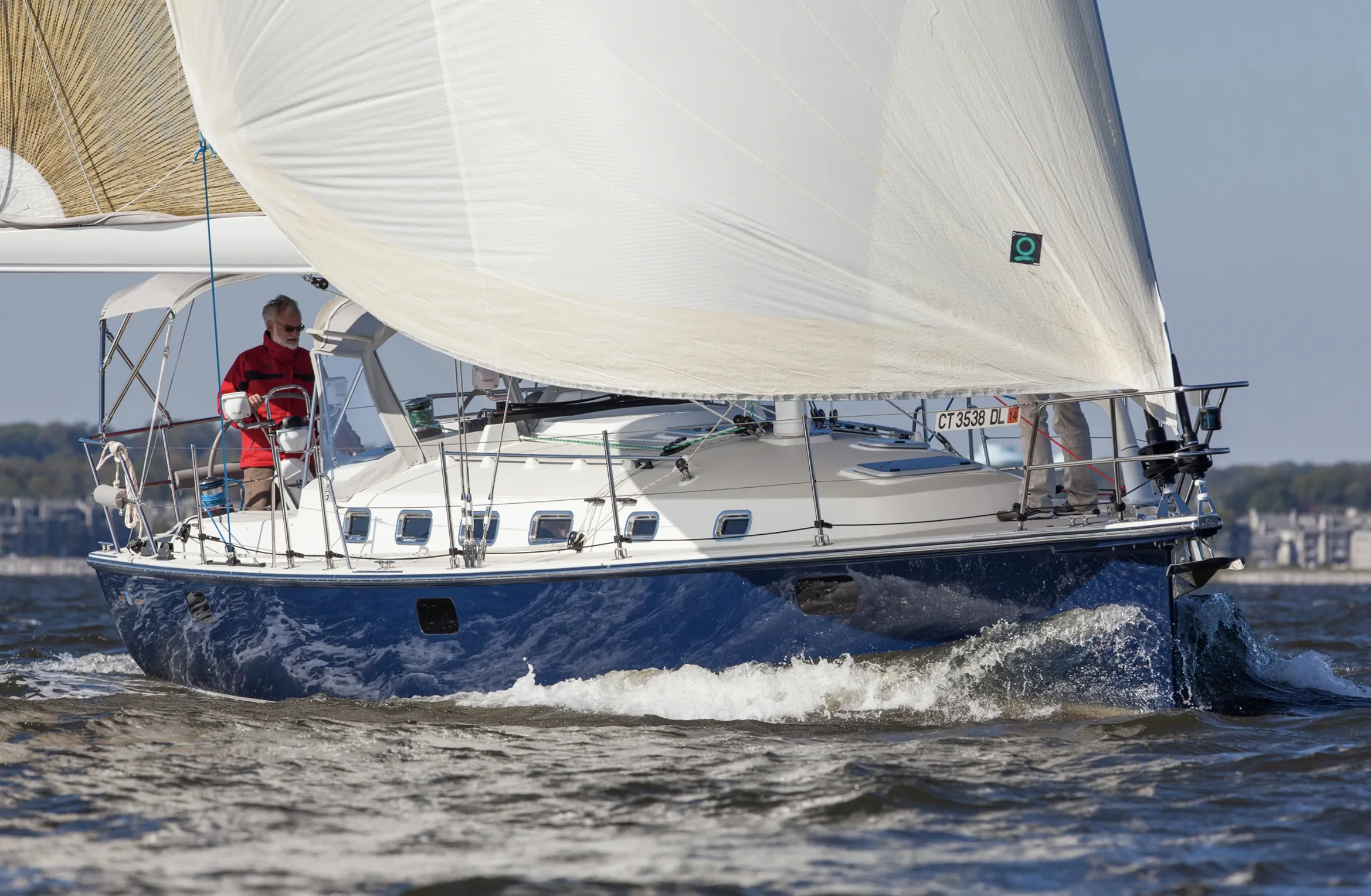 This nearly 9-foot increase in mast height and the shedding of almost 5,000 pounds redefine sailplan options. Some might assume this would set the stage for a carbon mast and boom, plus create an urge to use titanium pins and other weight-saving hardware. But part of the genius of this boat is the design team’s clear grasp of the cruising market. The BJ40 is a cruising boat for those who love to sail and do so without a crew of eight; the rig has been designed and engineered with this in mind. The mast, rigging, and sailplan reflect a sensible convergence where technology, performance, and cost correlate. Esoteric extremes have been avoided, but design development has not been ignored. The nicely tapered Sparcraft T6061L alloy spar, boom, and spreaders are a proven workhorse combo. The slight performance uptick of upgrading to a carbon rig would significantly bump up the bottom line, and using an alloy spar instead makes it easier to mount tracks or a radar bracket. It also eliminates concerns about what a lightning strike might do to a carbon spar. The sail area-displacement ratio of 20.6 and double-headsail solent sailplan make this a cruiser-friendly rig and a sailboat fine-tuned for a shorthanded crew. Gone are sluggish traits that would make a light breeze a sign to fire up the diesel. The roller-furled working jib sheets to the end of a self-tacking, carbon-fiber Hoyt boom. Our only concern is that, with no preventer attached, an unintentional jibe could send the deck-sweeping boom across the foredeck with a vengeance, and anyone in its way becomes a target. A preventer for the jib boom would make sense, especially in heavy weather and during off-the-wind reaching and running; another option would be ordering the boat sans the jib boom. 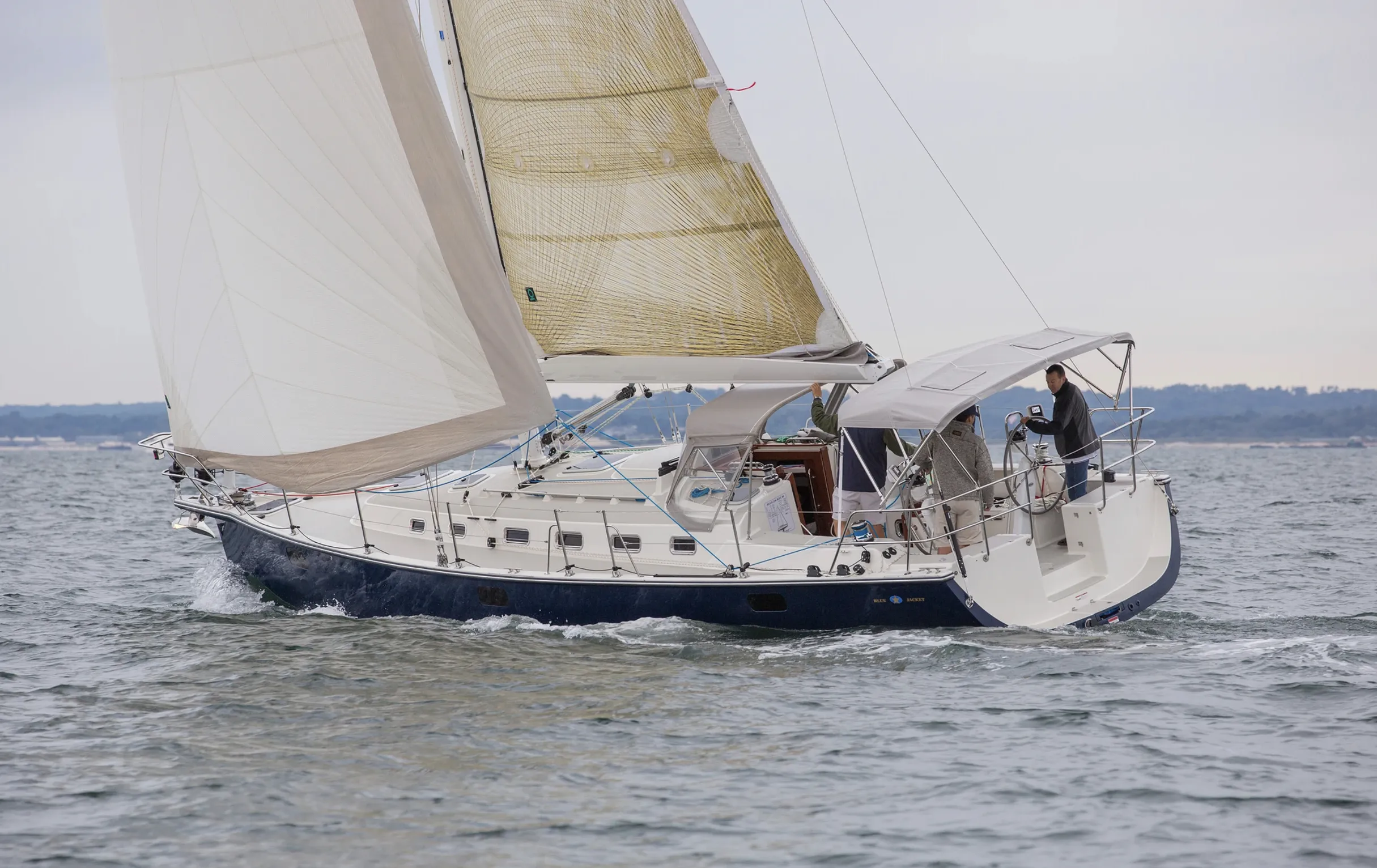 One of the make-or-break factors in any solent/reacher sailplan is the drive that the small-jib/big-mainsail plan delivers. We have tested similarly rigged boats that needed a larger headsail because there was just too much boat to be driven by the big main/small jib combo. The good news here is that the BJ40 is quite capable under this working jib and big main, thanks to the rig-height increase and hull-weight decrease. We found that it wasn’t until we were into single-digit windspeeds that the big main/working jib proved lacking. At that point, the big reacher rekindled the flame. The really good news, however, is the way in which this sailplan makes it easy to set the right amount of sail to cope with a wide range of conditions. The stem sports a stainless bowsprit that features several innovations. The weldment provides a tack point for both headsails, a roller and fairlead for the anchor and ground tackle, and a mount for the Hoyt boom. The slot and shape may put some limits on anchor choice, but the setup on the boat we tested worked well. The challenge with a plumb stem is getting the anchor far enough forward to allow retrieval without chipping away at the topsides. A relatively short extension will do the job in flat-sea anchor retrievals, but once the boat begins to pitch in a marginal anchorage, the anchor’s swing arc increases. The IP40’s anchor-handling attributes trump whats available on the Blue Jacket 40, but as adventure sailor Peter Hogg was fond of saying, “Some people prefer to go sailing; others go anchoring.” ACCOMMODATIONSTheres a distinct IP appeal that’s apparent to those who step below on the BJ40. The dominant, oversized starboard galley features a smallish centerline sink/sinklet combo, copious solid acrylic countertop space, a first-rate, two-burner Force 10 stove with a guardrail, a microwave, and a stainless drawer-style refer/freezer. There’s a hatch above the galley, and the fiberglass nonskid sole is appreciated when cooking underway, or when crew, clad in rain-soaked foulies, come down the companionway. 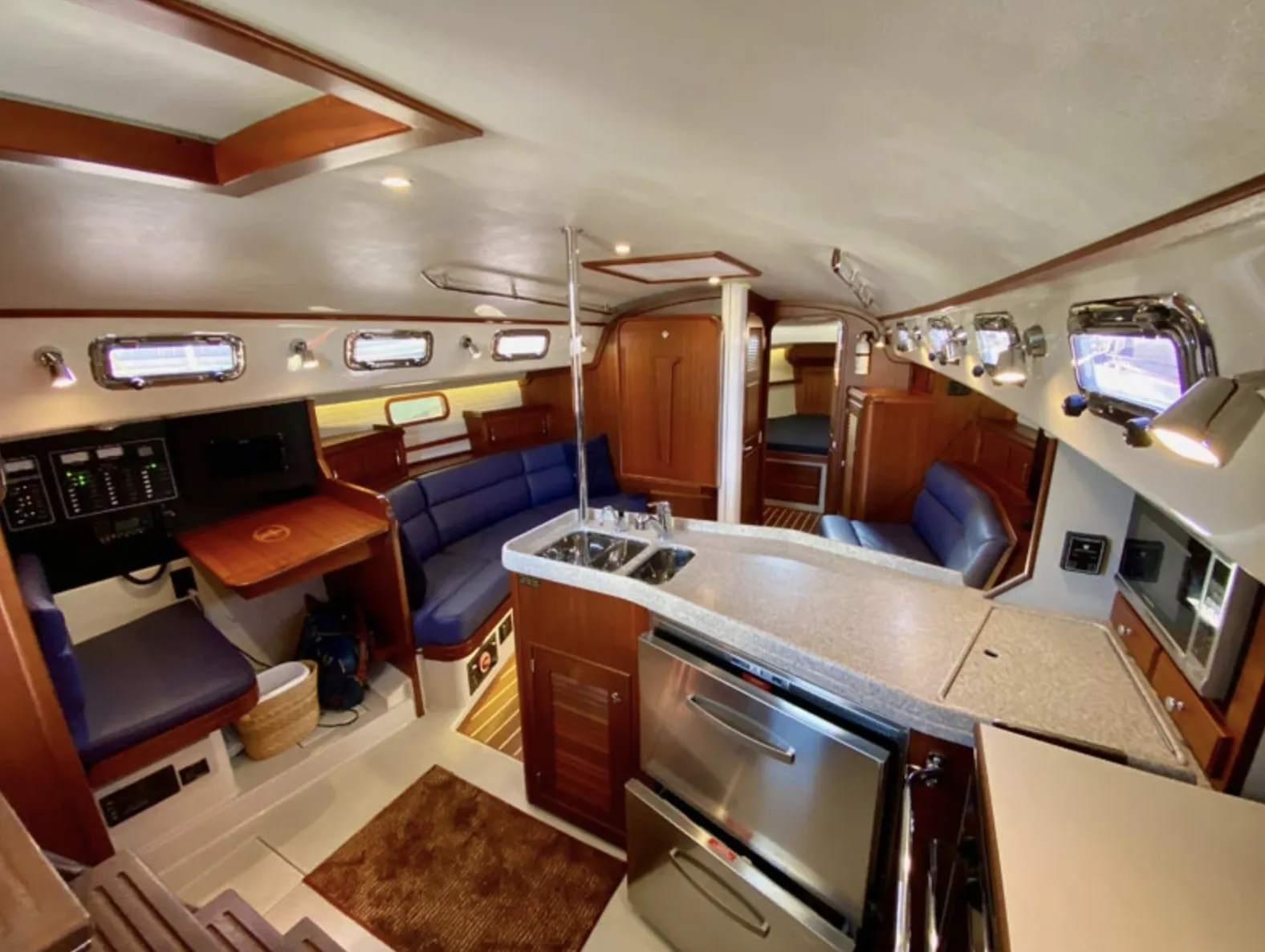 The main saloon has a spacious feel with the table folded up against the bulkhead, and when lowered and unfolded, it affords dining space for those seated to port and starboard. This is more of an in-port or at-anchor amenity, and another example of how the design covers multiple bases. A very useful, strategically positioned nav-station has been tucked in to the port side adjacent to the companionway ladder. Beneath the ladder is the engine access, which is by no means an engine room, but it offers adequate access to key components. Forward of the galley-saloon living area is a spacious head with shower and a sizable forward, double V-berth cabin. For aft accommodations, there are two options: side-by-side double berths in tight, but functional under-the-cockpit cabins, or a cabin to port and a massive cockpit locker to starboard.  Testers liked the idea of many smaller opening ports in the cabinhouse rather than a commitment to an overly large non-opening window. On the BJ40, hatches are strategically located near key areas below, but without any Dorade vents or other means of letting air in and keeping water out, tropical tradewind passagemaking will keep a crew overly eager to crack the hatch just a bit too soon. This is fine in fair weather, but tough to live with when the spray starts flying. The rigid vang swings back and forth over the main saloon hatch, so the lid cannot be fully extended underway. Testers noted that both tankage and storage were consistent with the performance-cruiser mission: minimal but adequate. During tests under power on a flat calm sea with a side-setting current, the BJ40’s 40-horsepower, three-cylinder Yanmar hummed away and the Max prop delivered enough thrust to tally a 7.2 reading on the knot meter, which concurred with the GPS. The semi-balanced rudder did not flutter or vibrate, and the steering control was smooth and positive, remaining responsive even when our velocity through the water was nearly nonexistent. In reverse, all it took was a little sternway for the boat to be easily steered in either direction. Care needs to be taken when backing at anything above a couple of knots, due to the powerful rudders desire to lever itself into a hard-over position. 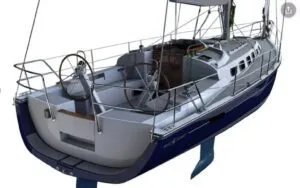 | 2014 Blue Jacket 40 | Larsen Marine Yacht Sales | | $369,900 | 2246022412 | | Waukegan IL | | | | | 2019 Blue Jacket 40 | Denison Yachts | | $499,900 | See website | | Palmetto FL | | The big, full-battened, well-shaped mainsail behaved admirably on the Harken Battcar track, and lazy jacks tamed the main during hoisting, dousing, and reefing. Its a big plus to have the draft and roach available in a conventionally hoisted mainsail. Mid-boom sheeting and a diminutive traveler were tradeoffs to keep the cockpit free of mainsheet tackle. Racers will miss the control that end-boom sheeting delivers, while cruisers will love the dodger/bimini combo and the absence of the mainsheet tackle sweeping across the cockpit. The big reacher is a powerhouse in light, close-reaching conditions and a major player on deeper reaches. In fact, the need for an asymmetrical is reduced thanks to the masthead hoist and upper girth of the furlable reacher. The one cautionary note is that although the sail seems like a plus-sized No. 1 genoa, it’s not meant to be used on a close reach in double-digit breezes. Sailmakers confirm this based upon an increase in their reacher repair business. From our point of view, the Blue Jacket 40 hits a sweet spot midway between a race boat and the heavy-displacement cruiser that needs its diesel or 15 knots of true wind to really move. The BJ40’s hull form and foils afford ample upwind performance, and headsail handling is a user-friendly experience. We don’t like the maintenance headaches of saildrives, but the only other negatives we found with the BJ40 were nit-picky ones. With the hefty base price tag of $390,000, the BJ40 is not a bargain boat, but you do get what you pay for, and in this case, it’s a well-built boat made by a crew that stands behind what they build. The Blue Jacket 40 is an efficient, well-built performance cruiser with comfortable accommodations that brim with sensible usability.  - Blue Jacket Yachts
- Island Packet Yachts
This review appeared March 2, 2020 and has been updated. RELATED ARTICLES MORE FROM AUTHORLeave a reply cancel reply. Log in to leave a comment Latest Videos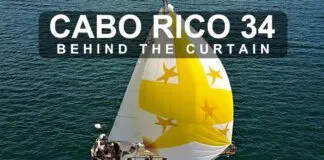 Cabo Rico 34 Boat Review Super Shallow Draft Sailboat: The Leeboard Sharpie Hans Christian 41T – Boat Review Seven dead after superyacht sinks off Sicily. Was the crew at...Latest sailboat review.  - Privacy Policy
- Do Not Sell My Personal Information
- Online Account Activation
- Privacy Manager
- Boating Safety
- Company News
Experiences- Destinations
- Boating Regulations
- How Much Does It Cost to Buy & Own a Boat? A Comprehensive Owner’s Guide
 Related Posts Six Reasons to Rent Instead of Buying a Boat How to Choose the Right Boat - Getmyboat Guide Finding the Right Fishing Boat for You There's a whole lot more to consider than just the purchase price. Here's everything you need to know as you consider the costs of boat ownership.Owning a boat can provide you with exciting adventures and lasting memories. If you love spending your holidays on the water fishing, cruising, or touring with your family, owning a boat should be on your bucket list. Unlike a rental boat, boat ownership allows you to enjoy a journey whenever you like, with no time limits. Setting aside the thrill of owning a boat for a moment, can you afford one? When buying a boat, it’s not only the sales price that counts. You must also consider the average cost of boat ownership, such as fuel, maintenance, insurance coverage, and storage. It would help if you researched all the options before diving into such an investment. This guide will give you all the information you need to own a boat. Let’s start with some of the things to keep in mind before purchasing a boat. Table of ContentsPurchase price vs. ongoing costs, are boats a good investment, can i afford a boat, used vs. new boat prices, different boat types & sizes, the best value boats for your money, marinas and storage, equipment & accessories, licenses and education, maintenance costs, the bottom line. The first thing that comes to mind when considering owning a boat is, obviously, the purchase price — how much are you going to have to pay upfront to buy the boat of your dreams? By making online price comparisons and asking around, you probably already have a rough idea of how much your dream boat costs. The purchase price of a boat depends on many factors, most significantly the size of the boat, and the type of boat — which can vary drastically depending on whether you want something for the occasional weekend family day on the water, multi-day boat trips, something suitable for large parties, a small and simple cruiser for fishing, or any number of other boat types .  The purchase price can also vary greatly depending on the boat's age and condition. Buying a new boat can range from $500 to $500 million though looking at used boats can offer considerable savings and might enable you to set aside more cash for the inevitable ongoing costs you'll face in the future. And of course, these prices are highly variable depending on the specific boat features and construction, but the biggest price jumps come when comparing entirely different styles of boat. For some rough ballpark examples, a brand-new cabin-free motorized fishing boat can easily cost up to $35,000, whereas a yacht will run you closer to $250,000 for a used one to $500,000 for a brand-new one. But, is that purchase price all you need to consider? Unfortunately, no, it's not. Owning a boat doesn’t end with paying the purchase price . You also have to consider the ongoing expenses, which can cost even more than the initial boat price in the long term. A simple thing such as trailering a boat can add significantly to your ownership cost, depending on how often you do it. Some additional expenses that come with owning a boat include: - Maintenance costs
- Storage costs
- Fuel expenses
- Insurance coverage
- Equipment and accessories
- Taxes, title, and registration
- Boat trailing expenses
A boat is a major life purchase, and even if you're not planning to use it for any commercial purposes, it could be considered an investment — and a significant one. But, is it a good investment? To be frank, no, not really. Many financial experts don’t consider a boat a sound investment because of the ongoing costs of maintaining it. Also, since it is a depreciating asset , many do not view it as a wise purchase because you’ll spend more to own it in the long run. The specifics and calculus of depreciation are complex, and it's worth diving into some of the thorough reports that you can find online — you can try using a boat depreciation calculator , or studying the depreciation of specific boat types . But wait! Owning a boat is about a lot more than just the financial side of it. If boating is your life's joy and a major part of your lifestyle, overall happiness, and how you like to spend your time, that's a very significant emotional element to weigh against the more cold and unforgiving financial numbers. And consider the other values a boat can bring to your life: - Personal fun: Some people can’t get enough of water adventures. You need a boat if you love being surrounded by blue skies and water. When personal enjoyment with family and friends gives you that adrenaline rush, no dollar amount can exceed such experiences.
- Commercial value: Owning a boat can provide you with a side income. When you’re not using it for a family adventure, consider renting out your boat for an attractive cost to another family. If you take advantage of the rental feature , you can also offer water tours, fishing, or sporting activities and earn some extra money.
- Resale value: While you will unquestionably take a big hit in depreciation to some degree, you can reduce it somewhat by taking excellent care of your boat and keeping it well maintained. And while you should never expect to be able to recoup all of what you spent on your boat purchase, your boat is still an asset with some resale value, unlike a consumable good.
It's natural to dream, but think carefully: are you really in a good financial position to turn your dream of owning a boat into reality? When you think about the purchase price of a boat and all the expenses of owning one, can you still afford it? Of course, you need a solid budget before making this huge investment. Aside from the purchase price, list the monthly expenses for repairs, maintenance, insurance, storage, equipment, and accessories. Budget for a certain percentage, such as 20% of the value, to cover these expenses. Also, think about the face value of your boat. More expensive boats tend to cost more on storage, maintenance, and gas than cheaper ones. If you buy a luxury boat, you’re also buying the life that comes with owning one. To figure out whether you can afford a boat or not, you have to think about the following factors: - Your credit score: If you’re securing financing for a boat, you must consider your credit score to know how much you qualify for. If you have a high credit score, you’ll qualify for higher financing and pay a very low-interest rate. A score of 690 or higher will likely get you the best deal.
- Consider your DTI: Your debt-to-income ratio will play another role in determining whether you can afford a boat. To calculate your DTI, add your monthly debt payments and divide them by your gross income. If you get anything less than 43%, you stand a good chance of being approved for a loan to buy your dream boat.
- Your budget: How much you plan on the purchase price for a boat and the ongoing costs is important in determining if you can afford it. Don’t go above your budget just because you can afford it. Sticking to your budget will save you from the looming stress of owning a boat.
Generally, affording a boat means buying and maintaining one well without affecting your living expenses. Consider the initial purchase price, financing implications, and the expenses of keeping the boat on the water. If you find it hard to afford one after reviewing these factors, give yourself more time. The Upfront CostThe first thing that comes to mind when you think of buying a boat is the upfront cost. Other things, such as maintenance and fuel, tend to come later. So, what is the upfront cost of owning a boat? And why are boats so expensive? A less expensive $150 floating boat will do for modest near-the-shore adventures. For a luxury cruise sure to turn heads, budget for thousands of dollars in upfront costs. The upfront cost of a boat will depend on numerous factors, such as the brand, type, size, and extra features. For example, if you plan to purchase a luxury boat with all the amenities that money can buy, you’ll probably have to pay for an arm and a leg to get it.  You can control the price depending on your primary purpose of using the boat. For instance, you won’t want to spend money on all the technology and luxury amenities to enjoy a simple cruise on a holiday weekend. You can save on various accessories, such as lights and entertainment, if you only spend a short time on the water. Some of the factors to keep in mind when deciding the upfront cost of purchasing a boat include: - Brand: Boats are available in different brands, affecting their prices. The cost of a small boat, 6-10 feet, can cost anywhere from $500 to $800. If you’re looking for brand-name superyachts, prepare to spend millions of dollars from the start.
- Style: If you care much about the style of your boat, recognize that the most stylish ones will cost more. Higher-end boats will cost more than less elegant ones.
- Size: If you want a bigger boat for your family and friends, prepare to pay more than you would for a simple one that accommodates three to five people. Any boat over 12 feet will need a bigger engine, which means a higher purchase price.
There’s a huge price difference between used and new boats. Buying a new boat can be more expensive than buying a used one of the same type. Of course, the condition of the used boat will also factor into the price difference versus a new one. A second-hand boat that has only been running for two years will be more expensive than one that has been around for more than five years. New boats come with luxury features and the latest technologies. They are generally immaculate because they’ve not experienced any wear and tear. The engine is still at maximum working capacity, and other amenities have not been touched. All the shine, beauty, and glamor are much more expensive. Aside from the higher price, new boats tend to depreciate faster. In the first year of using your new boat, it will depreciate at about 10% and then reduce to around 8% to 6% per year in the subsequent years. Even though buying a used boat comes with some added risks, used boats are much less expensive than new ones. You can find a good deal on a used boat on classifieds websites like Craigslist, BoatTrader.com, and Facebook Marketplace. Frequently, you can buy a good used boat for less than 50% of the cost of a new one. Compared to new boats, used boats depreciate at a much slower pace. A used boat has already experienced much depreciation and tends to retain its value more than a new one. The risk of buying a second-hand boat can include higher maintenance costs. Unless it is well-maintained, you risk buying a boat with pre-existing issues, from appearance and functionality to safety. Buying a new one guarantees peace of mind that you won’t get if you opt for a used one. Another significant factor determining how much upfront you’ll pay for a boat is its type and size. Boats come in different sizes and types; some might be wildly out of your budget range, and others quite affordable. Typically, boats are classed by length: - Class A : 16 feet or under
- Class 1: 16–26 feet
- Class 2: 26–40 feet
- Class 3: 40–65 feet
Many factors will determine the boat size most suited for you, including previous boating experience, storage space, activity, docking space, and budget. Once you decide on the size, the type of boat you choose is another factor that drives the purchase price. The most common types of boats include: - Pontoon boats: Many owners start with a pontoon boat to enjoy water adventures. These boats are perfect for fishing or just traveling in the water. They’re not good for water sports because they are very slow. Pontoon boats cost between $10,000-$80,000.
- Sailboats: A sailboat is another common type used for recreational activities such as cruising and racing. These boats are very economical, as you can use the sails and not fuel. You can get a quality sailboat for as low as $5,000.
- Yachts: A yacht is usually associated with luxury and prestige. Yachts have high-end facilities and entertainment features, allowing people to live comfortably inside for lengths at a time. All this luxury does come at a price. A small-sized yacht can cost a whopping $500,000.
- Fishing boats: Buying a fishing boat will ensure you enjoy unlimited fishing adventures. They tend to have a small seating area with an open deck space for storing caught fish. A new aluminum fishing boat can start at $25,000, while a fiberglass boat can range from $32,000-$35,000.
- Speedboats: Speedboats, also known as motorboats, are equipped with engines. Because of its powerful engine, a speedboat tends to go very fast but consumes a lot of fuel. You can get a new speedboat for $30,000-$75,000.
- Cabin cruisers: Cabin cruisers are also packed with all the best features money can buy. They work like mobile mini vacation homes, perfect for family adventures. A new cabin cruiser starts at about $100K and ranges to $500K.
To determine the best value for your money, return to the question, “Can you afford a boat?” Having looked at various boat prices, you can see that some boats are quite affordable, but others are expensive. But no matter how cheap or expensive a boat is, you must still consider the intended use.  For example, you can’t buy a fishing boat for racing. So, even if a fishing boat is cheaper than a speedboat, you’ll still go for the latter because it will fulfill the intended purpose. You won’t get value for your money if you’re buying a boat you won’t use. So, the best value for your money is one that fulfills its intended purpose. For instance, it won’t matter if you pay a hefty price for a cabin cruiser or a yacht as long as you spend a wonderful vacation with your loved ones onboard. So, when choosing the right boat , consider how it will serve you before considering its monetary value. The Ongoing CostsWhether buying a new or a used boat, you must look beyond the upfront costs. Keeping the boat active and ensuring it serves you well come at a cost. Knowing all the expenditures of owning a boat will help you devise a better plan so that these expenses won’t catch you off guard. So, before buying your dream boat, consider the following ongoing expenses. Where will you keep your boat when it’s not on the water? If you plan to store it at a marina, you’ll have monthly fees for the storage. Marina costs vary, including indoor or outdoor storage, the storage period, and other services such as cleaning and security. Storing your boat can range from a few hundred dollars to more than a thousand dollars monthly. For instance, storing your boat at a privately-owned storage facility might cost less than mooring it at a municipal or private marina. Additional fees with boat storage include utility fees, maintenance fees, car parking fees, and live aboard fees. How much you spend on fuel will depend on a few things: your type of boat, how often you use it, and the specific type of fuel you need. A sailboat will obviously be much more economical regarding fuel, since it can run primarily on wind power. On the other hand, a speedboat will tend to have additional costs because it consumes more fuel to power the engine. You might also spend more on boat fuel if you carry a huge load or encounter unfavorable sea conditions. And remember that fuel prices often fluctuate with the current economic situation, so plan your boating trips accordingly. Apart from the fuel, you’ll also have to pay for other operational expenses such as oil, pumps, lights, batteries, and specialized equipment. One thing you can do to reduce fuel costs is to use a fuel consumption gauge. Also, consider buying newer model boats designed for better fuel efficiency. To take your boat out on the water, you’ll likely equip it with different accessories. Some accessories are for your own use, while others are essential for running the boat. The good news is that some of these accessories are one-time expenses. However, you must factor them in because they contribute significantly to overall boat costs. Some accessories and equipment to consider for your boat include: - Lifejackets
- Fishing tackle
- Watersports equipment
- First aid kits
- Personal locator beacons
- Marina radio
- EPIRB (Emergency Position-Indicating Radio Beacon)
- Extra fishing rod holders
- Fire extinguishers
- Electronics
- Visual distress signal
- Sound-producing device
- Boat cushions
- Tackle storage
Of course, the accessories you need depend on the boat type, your purpose for using the boat, and how long you will spend on the water. Your needs also depend on the season, so you might only need some things at a time. Budget for the equipment as you need it, and treat your boat to an accessory upgrade occasionally. A boat operator license and a boater’s safety education course are mandatory in many states. When boaters are educated on operating a boat and safety measures, they’ll be less likely to get into an accident on the water. The weather conditions can change at any time, and it might be difficult to control the boat if you don't have the training you gain from taking safety courses. These courses remind boaters about safety rules, operational laws, and general boating knowledge. Every state has specific boater education requirements that you should review. Don’t just take the course because it’s a requirement; consider the benefits. You can select online or in-person classes for free or for a small instructional fee. After training, you’ll also need to pay title fees and registration. Your boat registration is the identification number on its bow. Getting your boat registration and title varies from state to state, so look into your state's requirements. Registration and title costs range between $20 to more than $200, depending on the vessel's type, size, and purpose. Whether you buy a used or new boat, you have to maintain it well to keep it in good condition and retain its resale value. Boat maintenance includes cleaning, waxing, engine tune-ups, and painting. You might also have to deal with repairs, such as electrical and plumbing issues. Yearly boat maintenance can cost about 5% to 10% of the boat's total value. The cost might be less or more depending on factors such as frequency of use, boat age, and weather conditions. You can also handle some maintenance issues yourself to save money. Remember that a new boat will cost less to repair than a used one. However, as the boat ages, it will depreciate and require more maintenance. Also, if you use your boat in freshwater, you’ll save more on maintenance and cleaning than if you use it in salt water. You need to insure your boat against unexpected occurrences, such as an accident or damage. The right coverage will give you peace of mind whenever you are out on the water or have your boat in a storage facility. The costs of insuring your boat also depend on several factors, such as the type, size, and frequency of use. Other factors influencing the cost include add-ons such as towing, salvage, docking, and storm coverage. Boat insurance coverage varies from state to state and with the insurance company you choose to work with. Conduct extensive research and read reviews before choosing an insurer for your boat. Once you identify one, let them give you a quote so that you can estimate your annual premiums and if they fit into your budget. So, What's the Total Cost?Buying a boat will be expensive or cheap, depending on what you want and how prepared you are. It’s important to research the purchase of various boat types and the ongoing costs before you make the bold step. You might pay twice the actual boat price if you calculate annual fuel costs, maintenance, storage, repair, accessories, and more. For example, if you bought a yacht for $250,000, the ongoing costs might add up to $500,000 annually. Remember, this figure includes one-time costs such as registration, training, and equipment. The amount might not be the same for subsequent years since you won’t have to register your boat again or take certain educational courses. The total investment also depends on your lifestyle. Apart from mandatory costs, other expenses accompany spending time on the water. These include food, drinks and ice, a tour guide, and other things to make your boat adventure enjoyable. Consider all the factors of owning a boat and fit them to your situation, then calculate your total cost. Given the fun and memories that owning a boat brings to the family, buying a boat can be a good ‘ROE’ - Return on Emotions. However, if you don’t prepare for all the expenses of owning a boat, you might not enjoy it in the long run. You must research and understand all the costs and aspects of a boating lifestyle. Remember, you’re not just buying a boat; you're buying the luxury of owning one. You can only enjoy your boat when you’re not stressing about the finances of owning it. Boat Buying FAQsHow do I determine the cost of a boat? Boat prices vary by brand, size, and type. You also look beyond the purchase price for ongoing maintenance, fuel, storage, and insurance costs. Why do boats consume so much fuel? Boats run on water instead of land, consuming more fuel than cars. Many forces drag it behind, such as wind resistance, waves, and aerodynamics, which contribute to more fuel consumption. How long does a new boat last? A new boat can last between 5-50 years. Factors affecting a boat’s lifespan include material (wood, aluminum, or fiberglass), frequency of use, and maintenance. What is the most expensive type of boat? A yacht and a cabin cruiser are the most expensive boats, ranging from $500,000 to millions. Browse Trip Categories- About Getmyboat
- Media Inquiries
- Terms of Use
- Privacy Policy
- Cookies Policy
- Accessibility Statement
- Member Interface Agreement
- How It Works
- Mobile Apps
- Boat Rentals
- Jet Ski Rental
- Fishing Charters
- Houseboat Rental
- Pontoon Rental
- Yacht Rental
- Sailboat Rental
- Bachelorette Party Boat Rental
- Party Boat Rentals
- Experiences Guide
Popular Destinations- Lake Travis
- Lake Lanier
- Newport Beach
- Lake Norman
24/7 live supportReal reviews from happy Getmyboaters.  Costs of Boat Ownership: How Much Does it Cost to Buy & Own a Boat? Table of Contents Last Updated on July 28, 2023 by Boatsetter Team Interested in buying a boat, but need to do some research about what exactly you’re getting into? Good thinking. The costs of owning a boat go far beyond just the initial purchase price and financing. Similar to many other items we purchase—like a car or a home, for example—learning how much it costs to buy and properly maintain this investment is an important first steps towards becoming a great boat owner. Many boat ownership costs and expenses will be obvious to a first-time boat owner, while others might come as a surprise. Some, such as insurance and registration, are almost universal while others are more specific to the boat size, type and location. Expenses vary depending on your unique situation, but this guide will help you understand the basic costs of boat ownership . 8 Common Expenses of Owning a Boat- Safety Equipment Required by the U.S. Coast Guard
- Storage and/or Marina Fees
- Regular Maintenance & Repairs
- Boat Insurance
- On-Water Towing Assistance
- Additional Gear & Accessories
- Trailer & Tow Vehicle
Learn How to Offset the Cost of Boat Ownership by Listing Your Boat with Boatsetter. 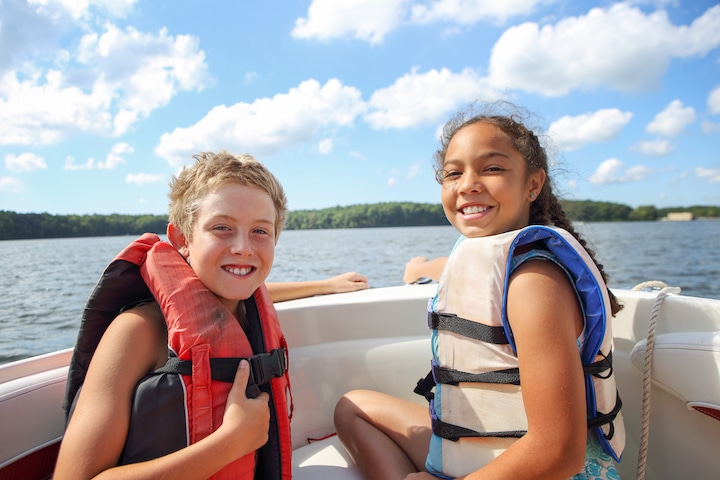 1. Boat Safety EquipmentEvery boat must be equipped with gear required by the U.S. Coast Guard and your state regulations. This is sometimes called a “safety kit,” and some new boat dealers can supply many of these items and may include them with a boat, but most do not. A basic boat safety equipment checklist includes: - Life jacket or personal floatation devices (PFDs) for every passenger onboard ($25 to $100 each) – If you boat with children you’ll need life jackets sized for them. Most states also require keeping a throwable floating cushion ($15) or ring on board.
- U.S. Coast Guard approved distress signal – which could be a set of flairs ($35) or an LED signal light ($80 to $150).
- Marine fire extinguisher ($25) – More than one may be required on larger boats.
- VHF radio – May not be required but is a good back-up to a cell phone for emergency use and also is handy for communicating with other boats, marinas, and law enforcement. Consider a basic floating hand-held VHF ($100) or fixed-mount ($150 to $400 plus antenna).
- Anchor and rode (chain) – A safety item when used to secure the boat if the engine fails or you run out of fuel. The anchor will keep you from drifting into danger. Of course it can also be used to secure the boat for casual situations. A basic fluke anchor ($50 to $150) works in most situations, but must be sized to the boat, and different types of anchor are designed for specific bottom conditions. Get some input from a local marine dealer on the best anchor choice for your situation. You’ll also need chain/rope rode for the anchor ($230 and up) sized for you boat and typical water depth where you boat.
2. Storage and/or Marina FeesEventually you’ll want to tie up to a dock. Or, you’ll get your boat out of the water for longterm or short-term storage. In either scenario, you’ll need: - Dock lines ($30 to $100 each) – Sized to your boat, four to six lines required.
- Fenders (also called bumpers) – To protect the boat from the dock ($20 to $60 each) sized to your boat, two to four required.
- Launch fees – Usually charged at most public ramps, and varies at about $5 to $15 per launch.
- Mooring fees – If you plan to keep your boat in the water at a marina, there will be a charge based on the size of the boat, which can range from $15 to $45 a month per foot of boat length depending on the region, whether the marina is public or private, and its amenities. Shore power for electric service at the dock is usually extra.
- Dry stack storage – in which the boat is stored on a fixed indoor or outdoor rack at a marina, can cost $50 to $200 per month. The boat is lifted off the rack with a fork lift when you want to go boating, and there may be a fee for this. Many marinas also have an area where a boat can be stored on its trailer between outings, which is a more-affordable option. You may not be allowed to park your boat and trailer in your driveway in some communities.
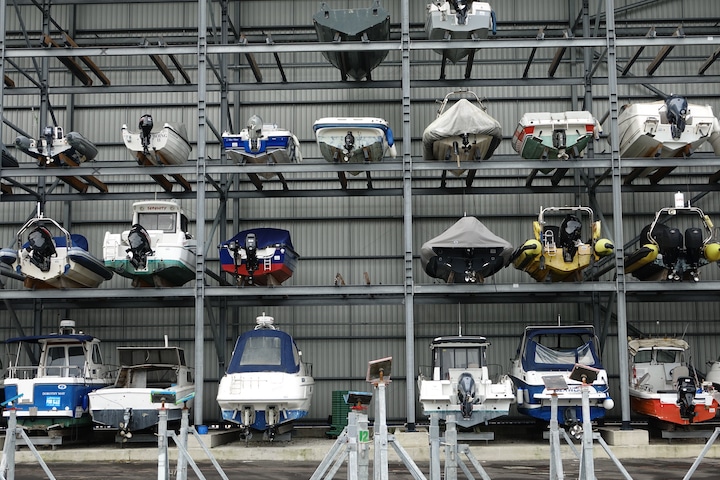 3. Regular Maintenance & RepairsThe cost of annual maintenance depends on the size and type of boat, whether it’s used in fresh or saltwater (and may need bottom paint, for example). Boat maintenance costs also depend on whether or not your boat needs to be prepared for off-season storage and winterized. You can assume $500 to $2,000 or more per year. Owners of smaller boats can often perform basic maintenance themselves and only pay for parts and supplies like engine oil. And of course, accidents happen. Even if you like to do-it-yourself, repair costs vary depending on the issue at hand, and if replacement parts are necessary. Opting for professional service or maintenance work will also include various service fees or costs of labor. Boats consume a lot of fuel—figure 8 to 12 gallons per hour of operation for single-engine runabout. If you purchase fuel at a marina, you’ll pay a premium over the cost at a filling station. When possible try to purchase fuel that does not contain ethanol, and use a fuel stabilizing additive with each fill-up. 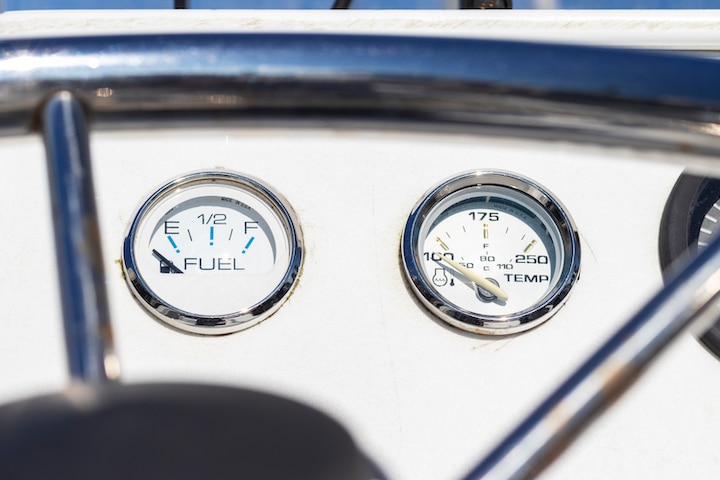 5. Boat InsuranceLiability and damage insurance premiums vary a lot by boat size, type and location. If you boat in a hurricane zone the premium will reflect that fact, for example. A basic rule of thumb is 1 to 3 percent of the boat’s value . A carrier that specializes in marine insurance will understand the hazards and issues specific to boat coverage. If you decide to list your boat on Boatsetter , our team offers extra peace-of-mind through our BoatUS Peer-to-Peer Rental Policy , specially designed to protect the boat owner and renter during a rental. This also includes on-water assistance through TowBoatUS, online boater safety certifications through the BoatU.S. Foundation for Boating Safety and Clean Water, and our world-class 24/7 support. 6. On-Water Towing AssistanceLike AAA service on the water, a towing assistance program can bring you gas if you run out or tow you to shore if your boat breaks down. This service is available on most larger bodies of water. Annual coverage from SeaTow (starting at $179 per year) is really affordable, while BoatUS often bundles its towing coverage with its insurance plans. Again, Boatsetter owners receive the additional benefit of on-water assistance through TowBoatUS when enrolls within our BoatUS Peer-to-Peer Rental Policy . 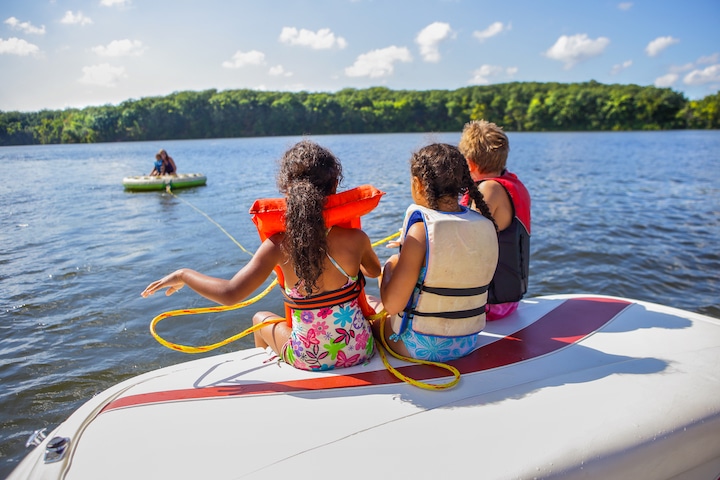 7. Additional Gear & AccessoriesIf you’re an avid angler ready to reel in the ‘big one,’ you’ll need all the appropriate gear to do so. That includes rods, reels, bait, fish finders, nets, rod holders, lures, you name it. The same concept applies if you’re interested in water skiing, wakeboarding, wake surfing or tubing. Count on purchasing the boards, inflatable tubes, and tow lines. Other popular boating accessories that you might want to have onboard include: - Marine electronics
- Stereo or Bluetooth speakers
- Sunscreen & sun protective clothing
- First aid kit
8. Trailer & Tow VehicleNot every boat comes with a trailer, and a pre-owned boat may be on a trailer you’ll want to replace for safety reasons. Figure $1,500 to $5,000 for a trailer, depending on boat size. Likewise, it’s not unusual for a family to buy a new trailerable boat, only to discover it’s too heavy to tow with the vehicle they already own. If a new truck or SUV is not in your budget, compare the combined weight of the boat, trailer and gear you are considered with the towing capacity as listed in your vehicle owners manual. List Your Boat Today to Start Earning $20,000 or More Annually – Find Out How. Editor’s Note: This article was originally published in December 2017 and updated in January 2022.  Charles Plueddeman is a self-employed writer and photographer based in Wisconsin. A staff editor and contributor to Boating Magazine since 1986, he is the author of its “Off My Dock” column. In the marine realm he specializes in engine technology and trailerable boats. His editorial work has appeared in many national publications, including Popular Mechanics, Men’s Journal, Playboy, Popular Science, Cycle World, and Harley-Davidson Enthuisast . Browse by experience Explore articles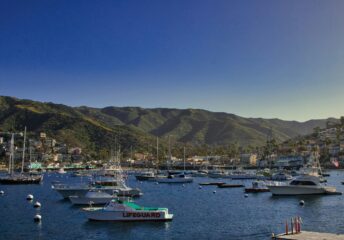 Boatsetter’s Summer Travel Trends for 2024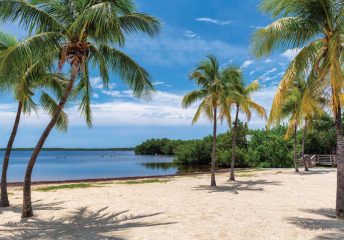 5 Best Beaches in Key Largo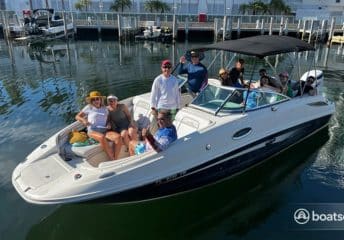 Achieving a Top Owner Badge on Boatsetter: 3 Tips for Success 4 Tips for Planning a Group Fishing Charter or Tournament Transport a Sailboat - Costs & How To Ship  Sailboat transport is an essential and very well-established boating service with numerous options. Sailboats can be transported by single-axle trailers, multi-axle trailers, cargo ships, and occasionally trains. Sailboats can also be transported across an ocean on their own with the help of a hired captain and crew. Costs vary widely based on size and type, and they range from $200 to more than $15,000. In this article, we’ll cover several of the most common sailboat transportation methods. We’ll cover the details and requirements of each method, along with the required method by sailboat size and type. Additionally, we’ll explore the average costs of each method for a typical production cruising sailboat. We sourced the information used in this article from sailboat transport agencies along with government towing and transportation guides. We carefully researched pricing to help you get a basic idea of what it’ll cost to transport a sailboat. Table of contents Is Transporting a Sailboat Difficult?It’s not necessarily difficult to transport a sailboat, but it does require care and careful planning. Your responsibilities as the sailboat owner range from trailer maintenance and careful driving to the organization of international logistics. In this article, we’ll discuss ways to streamline the process and make it easier. Is Sailboat Transport Expensive?Sailboat transport can be expensive, but it doesn’t have to be. Obviously, moving a small sailboat is relatively cheap in comparison, especially if you already have a truck and a trailer. The cost of transporting a larger boat is higher, as you’ll probably need to hire a shipping company or a crew. There are multiple ways to transport a large sailboat, and the more economical method isn’t always immediately evident. Some boats may be cheaper to ship on a specially-designed yacht carrying vessel, while others may be cheaper if you hire a delivery crew. Pricing varies between boats, locations, and destinations, so it’s essential to research all available methods and request multiple quotes. If you do, you could save thousands on transport and delivery, not to mention insurance costs to protect your vessel from possible damage. Sailboat Transport MethodsThere are several ways to transport a sailboat, and the ideal method depends upon the size and dry weight of the vessel. Dry weight is distinct from displacement, so it’s important to ensure that you have the correct number. Here are the most common ways to transport sailboats short and long distances. Self TowingSome sailboats can be towed, though the vehicle, trailer type, and license requirements vary based on size. The smallest and lightest dinghies and pocket cruisers can be towed by most typical cars, provided you have a heavy-duty tow hitch installed. Larger sailboats, in the 20-foot range and longer, usually need to be towed by a pickup truck or SUV. A half-ton gasoline pickup truck is sufficient for lighter vessels, as long as the dry weight doesn’t exceed the vehicle’s towing capacity. Also, remember that some automakers determine towing capacity under ideal test conditions, so your truck’s actual towing ability may be slightly lower than its rating. You’ll have to collapse or remove the mast, boom, and standing rigging of the sailboat and secure it, regardless of its size. Most trailer sailers can be towed by half-ton or 3/4 ton single rear wheel trucks. Larger sailboats, such as towable coastal cruisers, may require a multi-axle trailer and a gooseneck. This setup is often found with a dually 3/4 ton or 1-ton truck. The Basics of Towing Rules in the United StatesThe rules of the road are clear when it comes to towing. With a Class C license (a standard driver’s license), the maximum overall trailer length you can tow is 60 feet. The maximum length of a Class C trailer surface is 53 feet. Length usually isn’t the issue when it comes to towing sailboats. The maximum width of a class C trailer is 8 ft 6 in, which includes the items on the trailer. The regulations mean that the beam of your boat can’t exceed about 8 feet, give or take a couple of inches. With a more advanced license or a Commercial Driver’s License (CDL), you can tow a much larger trailer and drive a semi-truck. Some larger sailboats with greater beam width can be towed this way, though only if they remain below the maximum height. Height requirements for trailers vary between 13 ft, 6 inches to 14 ft, depending on the location. This is measured from the ground to the top of the item on the trailer. Be sure to plan your route carefully if you’re towing a boat with a full keel, as some older overpasses and railroad bridges are much shorter than 13 feet. Professional Towing ServicesIt’s usually best to leave the towing to professionals, especially if you’re towing a large boat. Experienced drivers with big rigs and commercial licenses can transport surprisingly large vessels safely but at a cost. The benefit of using a professional service is that you’re taking the risk off your shoulders. Many professional towing services offer insurance, which is essential. Insurance protects the loading and unloading of the boat and covers any damages that occur en route. For the price, it’s a no-brainer. In most cases, the tow company will not be able to help you launch your boat. You’re responsible for arranging boat crane services at your destination. It’s best to plan carefully, as you may end up paying more if you make the driver wait too long. Cost of Professional Sailboat Towing ServicesCost varies widely based on the company, location, and size of the load. Most towing companies have a base fee, a fee of the assessed load, and then a per-mile charge. Some companies have different fee structures. Companies that offer quotes usually predict a charge of between $500 and $1,000 for typical trips, though it can cost as little as $300 if you have a relatively small boat and it only needs to travel a short distance. Shipping a Sailboat on a Cargo ShipLarge and small sailboats are frequently sent across oceans via cargo ships. This method is time-tested and relatively cost-effective, though it’s not as straightforward as just sailing the boat across. Some people hire an agent to arrange shipping, which is the easiest and most reliable way to have a headache-free experience. Shipping a sailboat by sea is slower than over-the-road transport, and schedules are less flexible. Often, you’ll have to wait for a spot to open up on a specifically-designed yacht carrying ship. Once the ships are loaded, they set out at predetermined times that might be months ahead of when you booked. The best way to ensure you get a spot on a yacht shipping vessel is to plan well in advance of when you actually need to transport the vessel. Logistics are the greatest challenge of shipping a boat on a larger ship. If you don’t work with an agent or an accommodating shipping company, you could have to work out the following and more: - Transportation to the shipping yard
- Loading and securing instructions
- Shipping destination
- Payments to various services
- Customs in the destination country (if outside of the U.S.)
- Taxes and import fees
- Declarations
- Inspections
- Unloading at the destination
- Transportation from the destination port to the marina
As you can see, there are lots of reasons to hire a professional to manage the minutiae of shipping a sailboat. The last thing you want is to have your boat seized at customs or have it dropped off in an unguarded yard in the wrong location. Cost to Ship a Sailboat on a Cargo ShipShipping costs for ocean-going boat transport are lower than many people expect. A lot of factors are involved, including the size of the boat, its height (from keel to mast top), its displacement, and the distance it needs to be shipped. The lowest prices you’ll find to ship an average-sized boat are around $3,000 to $5,000. A more typical estimate for an average sailboat is between $6,000 and $10,000. Some vessels and destinations cost upwards of $15,000. Costs tend to increase with the size and distance, and the value of your sailboat also plays a part. Prices in the yacht shipping industry are competitive, which is why it’s relatively affordable to ship a boat over an ocean. It’s surprisingly popular as well, and there are more than a dozen shipping companies offering long-distance ocean transport specifically for yachts of various sizes. Hired DeliveryHired crews for boat delivery is the other way to transport a sailboat over the water. Crew services find a captain and a small professional crew to sail your boat for you. This is a great option for large boats, as it’s often less expensive and time-consuming than shipping it on a larger vessel. Hired crew delivery services are offered by companies and experienced individuals. You can even find a trusted friend to crew your boat for you, and they can hire a crew member or two to accompany them for the journey. While under hire, the crew will be living in your boat. Crew members come from all backgrounds, and many sailors spend a summer or two working for a charter service to make some money or get free transportation to other countries. Cost to Hire a Delivery CrewHired crew delivery costs vary, though the more hands you need, the more it costs. Crews and captains usually charge daily rates for yacht delivery services. A fast sailboat is almost always cheaper to transport than a slow sailboat. As an example, we’ll use the services of Captain James Lowe , who is a USCG licensed 200-ton Master. As of the writing of this article, Captain James Lowe charges between $350 and $425 per day for his services, depending on the size of the vessel. Deckhands cost $175 per day per person, which is in addition to the Captain’s charges. These are the base rates, and they’re a good representation of what professional crewed delivery costs. You may find cheaper rates with other groups or individuals, but it’s worth the cost if you want a trustworthy and experienced crew. Additional charges often include transportation costs (to and from the destinations), fuel costs (for heating, cooking, and motoring), and a deposit is usually required for fuel. These costs are impossible to predict without knowing your specific plans, so it’s best to reach out to Captain James Lowe for a specialized quote. Hired crew delivery services usually have a minimum crew requirement for different boat sizes and types. In this case, sailboats require a minimum of one deckhand in addition to a captain. Larger sailing vessels of 65 feet or greater require two or more additional deckhands. Related Articles  Daniel Wade I've personally had thousands of questions about sailing and sailboats over the years. As I learn and experience sailing, and the community, I share the answers that work and make sense to me, here on Life of Sailing. by this author Travel Logistics  Most Recent What Does "Sailing By The Lee" Mean?October 3, 2023  The Best Sailing Schools And Programs: Reviews & RatingsSeptember 26, 2023 Important Legal Info Lifeofsailing.com is a participant in the Amazon Services LLC Associates Program, an affiliate advertising program designed to provide a means for sites to earn advertising fees by advertising and linking to Amazon. This site also participates in other affiliate programs and is compensated for referring traffic and business to these companies. Similar Posts How To Choose The Right Sailing InstructorAugust 16, 2023  Cost To Sail Around The WorldMay 16, 2023  Small Sailboat Sizes: A Complete GuideOctober 30, 2022 Popular Posts Best Liveaboard Catamaran SailboatsDecember 28, 2023  Can a Novice Sail Around the World?Elizabeth O'Malley June 15, 2022  4 Best Electric Outboard Motors How Long Did It Take The Vikings To Sail To England? 10 Best Sailboat Brands (And Why)December 20, 2023  7 Best Places To Liveaboard A SailboatGet the best sailing content. Top Rated Posts © 2024 Life of Sailing Email: [email protected] Address: 11816 Inwood Rd #3024 Dallas, TX 75244 Disclaimer Privacy Policy Visit our Popular Forums- Monohull Sailboats
- Multihull Sailboats
- Powered Boats
- General Sailing
- Antares Yachts
- Fountaine Pajot
- Lagoon Catamarans
Cruising Business- Boat Classifieds
- General Classifieds
- Crew Positions
- Commercial Posts
- Vendor Spotlight
Life Aboard a Boat- Provisioning: Food & Drink
- Families, Kids, & Pets Afloat
- Recreation, Entertainment, & Fun
- Boat Ownership & Making a Living
- Liveaboard's Forum
Seamanship, Navigation & Boat Handling- Seamanship & Boat Handling
- Training, Licensing, & Certification
- Health, Safety, & Related Gear
- Rules of the Road, Regulations, & Red Tape
Engineering & Systems- Const. / Maint. / Refit
- Product / Service Reviews
- Electronics: Comms / AV
- Electrical: Batts / Gen / Solar
- Lithium Power Systems
- Engines & Propulsion
- Propellers & Drive Systems
- Plumbing / Fixtures
- Deck Hdw: Rigging / Sails
- Aux. Equipment & Dinghy
- Anchoring & Mooring
Photo Categories- Member Galleries
- Life Onboard
- Sailing in the Wind
- Power Boats
- Cruising Destinations
- Maint. & Boat Building
- Marine Life
- Scuba Diving & Divers
- General Photos
Recent Photos Listing Categories- African Cats
- view more »
- Crew Wanted
- Crew Available
- Enhance Your Account
- Meet the Mods
- Meet the Advisors
- Signup for The Daily Cruiser Email
 | | | Please support our sponsors and let them know you heard about their products on Cruisers Forums. | | 29-12-2009, 13:31 | | Boat: Careel 22
| and rig need replacing about every 10 years for crusing sail-boats? And at todays prices, one could expecct a quote of around $70,000AU + (around $50,000US +) for and rig on a 40 to 50' sail-boat?
I would apprecate all replies from those that know, specially "Full-time folk".
Calm seas and good winds to all.
Bill | | | | | 29-12-2009, 14:17 | | Boat: Nordship 40ds
| . I have got quotes for sails for my 40' and they range from $8k for a and a main and I replaced the standing on my boat. That cost me $10k. This was rod and increased the quite a bit. if it were wire you could get away for about half that . Probably less if you did the yourself. I have never heard of anyone replacing their after ten years. Except on a boat.
| | | | | 29-12-2009, 14:36 | | Boat: Morgan OI 413 1973 - Aythya
| for 25 years and I have replaced the standing rigging (shrouds only w/swedges) twice and the sails once. The main, 120 and mizzen costs me about 6K in 1992 and my rigging cost me about 2k on each occassion; however, I did ALL the myself. I simply ordered the measured lengths and their swedge fittings. I did replace one chainplate of 12 over the 37 year age of the boat and I have had no need to replace turnbuckles, toggles, or masts over that time. I have inspected and refinished much of this regularly. I think the high costs you hear of are only typical for owners that this tasks to professional rigging companies, not the approach that is typical for most fulltime cruisers. 'take care and joy, Aythya crew | | | | | 29-12-2009, 14:54 | | Boat: Cat in the med & Trawler in Florida
| | for 25 years and I have replaced the standing rigging (shrouds only w/swedges) twice and the sails once. The main, 120 and mizzen costs me about 6K in 1992 and my rigging cost me about 2k on each occassion; however, I did ALL the work myself. I simply ordered the measured lengths and their swedge fittings. I did replace one chainplate of 12 over the 37 year age of the boat and I have had no need to replace turnbuckles, toggles, or masts over that time. I have inspected and refinished much of this regularly. I think the high costs you hear of are only typical for owners that this tasks to professional rigging companies, not the approach that is typical for most fulltime cruisers. 'take care and joy, Aythya crew | | 29-12-2009, 15:06 | | Boat: Nordhavn 47
| . Sails quotes are running 6-7K for main and genoa.
Jim | | | | | 29-12-2009, 15:32 | | Boat: Roberts 44 Offshore
| . Complete and Mizzen from Rigging Only, $4500 including . This is every part except chainplates. | | | | | 29-12-2009, 15:40 | | Boat: Gozzard 36
| system for about $13K more.
| | | | | 30-12-2009, 05:47 | | Boat: Caliber 40
| main for our Caliber 40. The total cost for all three sails from UK Halsey was $7700.
Can't say about the rigging. We will probably be in the market for new standing rigging in the next year or so.
Caliber 40 hull #55 | | | | | 30-12-2009, 05:57 | | Boat: Roaring Girl: Maxi 120 ketch, 12 long
| coast for 3 years before we did that, including some fairly hairy short-term moments. When we rerigged in 2006, it was about GBP3000, but we are a ketch!
Your insurers might have a view on length of time too.
Similarly lots of UV will shorten your sails' lives - so that will effect your budgets for replacement.
Secondly where you buy your sails can vary hugely in price. We bought a new main for our 40' ketch in 2008. We got quotes in the UK, and - and we could have bought two in for the EU prices. The China one, including tax, etc was around GBP1000. The other two quotes were both just over GBP2K. We are very happy with the quality of the sail. There were problems with the cover which they replaced free with no arguments.
Some people want their sail maker to do the first bending on etc, and that can be very useful. You do need to get your measurements absolutely right. But it's a huge saving to bear in mind when you make the decision.
So the you started this with seems very very high to me, even if you're not up for doing all the re-rigging yourself. | | | | | 30-12-2009, 06:48 | | | | Shop in and here is what they gave me. The quality and were great and the price seemed to be the best.
Sails (Main and 135%) $5000
Standing Rigging $4800
Tide Sail Track $1250
$1000
I have a 42' and was looking for this for a while. We will see how they hold up but so far so good. | | | | | 30-12-2009, 13:45 | | Boat: Careel 22
| on vessels of 40 to 50', i.e. Which were more suitable for full-time use, before jumping in. I had become, almost, set in believing a 36 to 40' would be best size-and-fit for me but...being a retired MV man (merchant service) I have kept the door open on which vessel, sail or MV, I would be better of with. I have no wish to buy in a rush then repent at leisure and, as I'm also a man of limited means, I need to be careful with my funds...don't we all I found this site, and that's where I found the "sail and rigging replacement costs" that started this thread. Philip, the owner of the site, may have, by accedent, entered an extra zero, but from what you "people who know" say...He's way out on the figure of $50,000US.
Again, thank you for responding with useful figures. They are a big help to anyone in that "make-your-mind-up...Before you buy" mode | | | | | 30-12-2009, 14:09 | | Boat: Valiant 40 (1975)
| and have prices on sails. I would probably count at least 7k for rigging and 10k for a almost new set of cruising sails. I pulled the chainplates off, cleaned them and took a good look at them. Replaced almost all of them due to pitting and cracks (after 35 years) But then again, i don't want to worry about them for another 35 years... | | | | | 30-12-2009, 16:38 | | Boat: 50ft powercat, light,long and low powered
| type and performance expectations and requirements.
My decision to go over sail was based on quality alloy rotating mast, Anderson winches and mostly Antal fittings elsewhere, batcar system, square top cruiselam or similar sails, with screechers and kites in socks built by a specialist .
replacement every 5 to 7 years based on previous sail longevity, headsails similar.
Wire replacement every 5 years, forestay earlier again based on wire on previously owned vessel.
This worked out to be a pretty big number
Of course I could have put up a telegraph post with gal wire and second hand rags or new ones, but for the style of vessel (performance multi capable of actually sailing in 5 knots of breeze) it would seem a pointless exercise and a lot of can be bought for the cost of rig, sails and hardware and replacement.
| | | | | 30-12-2009, 21:04 | | Boat: C & C Landfall 38
| | | | | | 30-12-2009, 23:50 | | Boat: Careel 22
| type and performance expectations and requirements.
My decision to go over sail was based on quality alloy rotating mast, Anderson winches and mostly Antal fittings elsewhere, batcar system, square top cruiselam or similar sails, with screechers and kites in socks built by a specialist .
replacement every 5 to 7 years based on previous sail longevity, headsails similar.
Wire replacement every 5 years, forestay earlier again based on wire on previously owned vessel.
This worked out to be a pretty big number
Of course I could have put up a telegraph post with gal wire and second hand rags or new ones, but for the style of vessel (performance multi capable of actually sailing in 5 knots of breeze) it would seem a pointless exercise and a lot of can be bought for the cost of rig, sails and hardware and replacement. | | Thread Tools | | | | Rate This Thread | :
| | Posting Rules | | post new threads post replies post attachments edit your posts is are code is are are are | | Similar Threads | | Thread | Thread Starter | Forum | Replies | Last Post | | | jeffbrainard | Classifieds Archive | 3 | 13-11-2009 06:27 | | | RayfromFrance | Monohull Sailboats | 36 | 27-08-2009 23:22 | | | Born to Cruise | Monohull Sailboats | 5 | 02-06-2008 04:25 | | | bg9208 | Deck hardware: Rigging, Sails & Hoisting | 3 | 11-02-2008 19:49 | | | dustinp | Construction, Maintenance & Refit | 27 | 18-11-2007 05:06 | Privacy Guaranteed - your email is never shared with anyone, opt out any time. Boat Shipping Cost CalculatorCalculate boat shipping & transport cost, estimated boat shipping cost. Enter a start address, end address, and boat dimensions to calculate a shipping cost estimate Get Shipping QuotesEnter your details below to receive shipping quotes from our trusted carriers. $ 0 per mile (avg.)$0 (average). How Much Does It Cost to Transport a 40-Foot Boat?One might think that transporting a 40-foot boat would cost a fortune because of its size and weight. But actually, it doesn't have to be pricey. Let me give you three options for transporting a 40-foot boat, with a breakdown of costs for each. The average cost of transporting a 40-foot boat by road is between $2.75 and $3.75 per mile. For shipping, the cost can range from $1 to $3 per mile for distances under 1,000 miles. Crewing a boat can be more cost-effective, with the cost per mile ranging from $0 to $1.50, but this option requires more time and effort. Whichever method of transportation you choose, there will be additional expenses along the way, such as permit fees and fuel costs. Let's look at other additional costs that you may need to take into account as well. - Crewing a boat is the most affordable option for transporting a 40-foot boat.
- If you want faster boat transport, you should opt for road transport.
- If you're looking to transport boats overseas, then opting for cargo shipping is best.
- The longer the distance, the more you can expect to pay for transportation.
- You also need to prepare for insurance costs, fuel, food, and accommodation costs, as well as labor costs.
 On this page:Cost breakdown of transporting a 40-foot boat via different methods, detailed comparison of the three methods of boat transport, factors influencing the cost of transporting a 40-foot boat. Below is a table showing the cost per mile of transporting a 40-foot boat via road transport, boat shipping, and crewing: | | | | | $2.75 - $3.75 | $1.50 - $3.50 | $0 - $1.50 | The per-mile cost of transporting a boat varies depending on the size of the boat, the distance traveled, and the mode of transportation. The average cost of transporting a boat via road is between $2.75 - $3.75 per mile for boats greater than 12 feet long. For shipping, the cost can range from $1.50-$3.50 per mile for distances under 1,000 miles, but for greater distances and more complex requirements, the cost can be significantly higher. Crewing a boat can be more cost-effective, with the cost per mile ranging from $0-$1.50, but this option requires more time and effort. For other types of boats, the table below shows the estimated costs of transporting each via road, cargo shipping, and crewing: | | | | | | | $2.50 | $1.50 | $0.75 | | | $4.00 | $3.00 | $1.50 | | | $6.00 | $5.00 | $2.50 | | | $7.50 | $6.50 | $3.25 | Cost of road transportRoad transport is a popular option for boat owners who want to move their vessels over a short distance, such as within the same country. It involves loading the boat onto a trailer and towing it using a truck. The cost of road transport depends on the distance traveled, the size of the boat, and the type of trailer used. Here is a sample breakdown of the costs involved in transporting a 40-foot boat via land: | | | | | $200 - $500 | | | $200 - $500 | | | $50 - $200 | | | $100 - $300 | | | $500 - $1,000 | | | | Cost of boat shippingShipping is highly preferred by those who want to move their vessels over a long distance. It involves hiring a shipping company to transport your boat via cargo ship. The cost of shipping is calculated based on the distance traveled, the size of the boat, and the shipping method. Here is a sample breakdown of the costs involved in shipping a 40-foot boat: | | | | | $2,000 - $10,000 | | | $500 - $1,500 | | | $500 - $1,000 | | | | Cost of crewing a boatCrewing is a suitable option for boat owners who want to move their vessel over a long distance and have the necessary experience and skills to operate the boat. It involves hiring a captain and crew to sail your boat to its destination. The cost of crewing is calculated based on the distance traveled, the size of the boat, and the number of crew members needed. Here is a sample breakdown of the costs involved in crewing a 40-foot boat: | | | | | $500 - $1,500 per day | | | $200 - $500 per day | | | $100 - $300 per day | | | | Below is a detailed comparison of the advantages and disadvantages of road transport, boat shipping, and crewing. 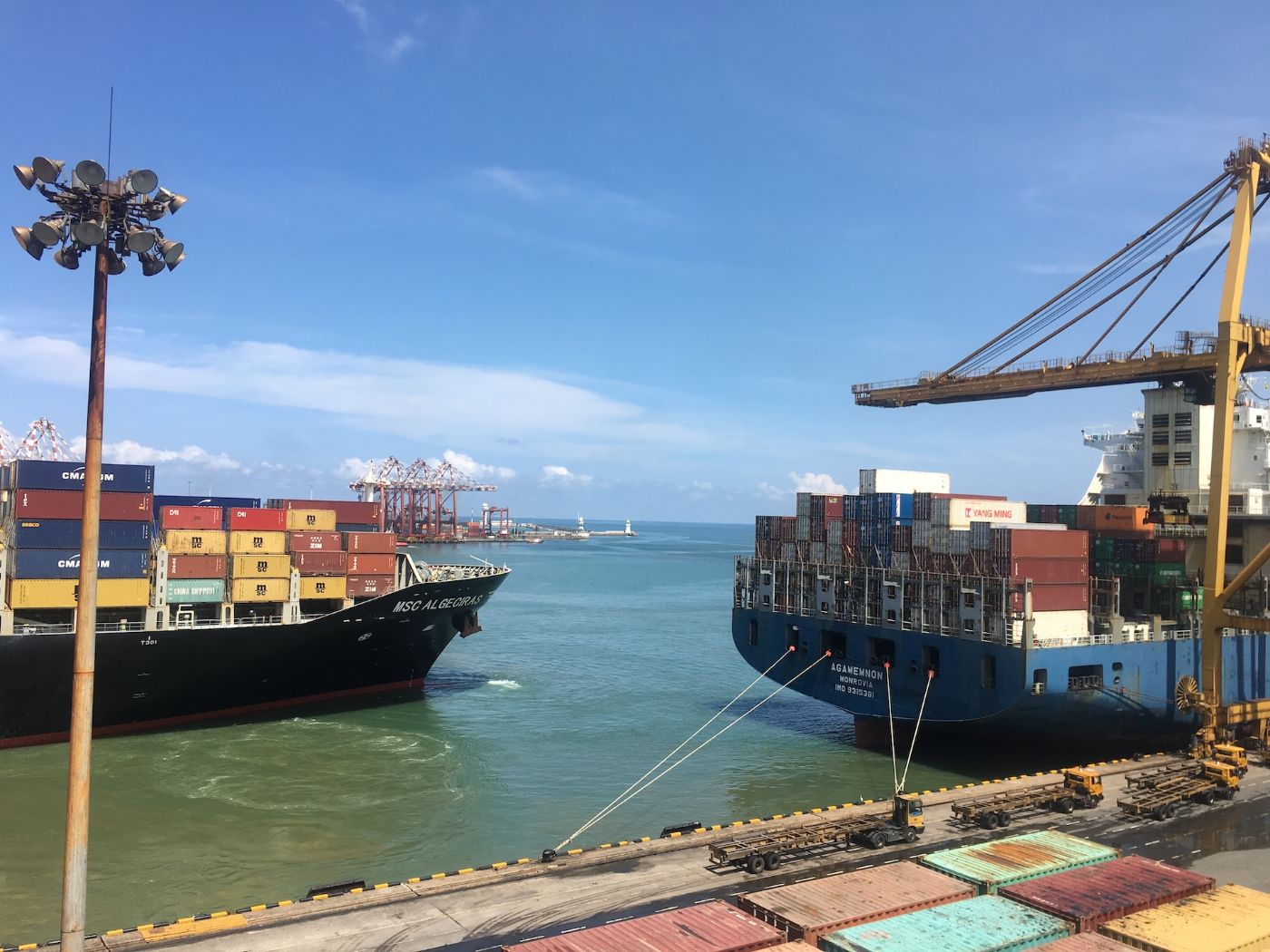 Choose road transport if you're moving the boat within the same countryIt involves loading the boat onto a trailer and towing it using a truck. The cost of road transport depends on the distance traveled, the size of the boat, and the type of trailer used. - Can be more cost-effective for shorter distances
- Allows for more control over the transportation process
- Can be faster than shipping
- Limited to land-based routes
- May require special permits or escorts for oversized loads
- Can be more expensive for longer distances
Choose boat shipping if you're moving the boat overseasBoat shipping is for transporting boats overseas or across large bodies of water. It involves loading the boat onto a cargo ship and transporting it to the destination port. The cost of shipping depends on the distance traveled, the size of the boat, and the shipping company used. 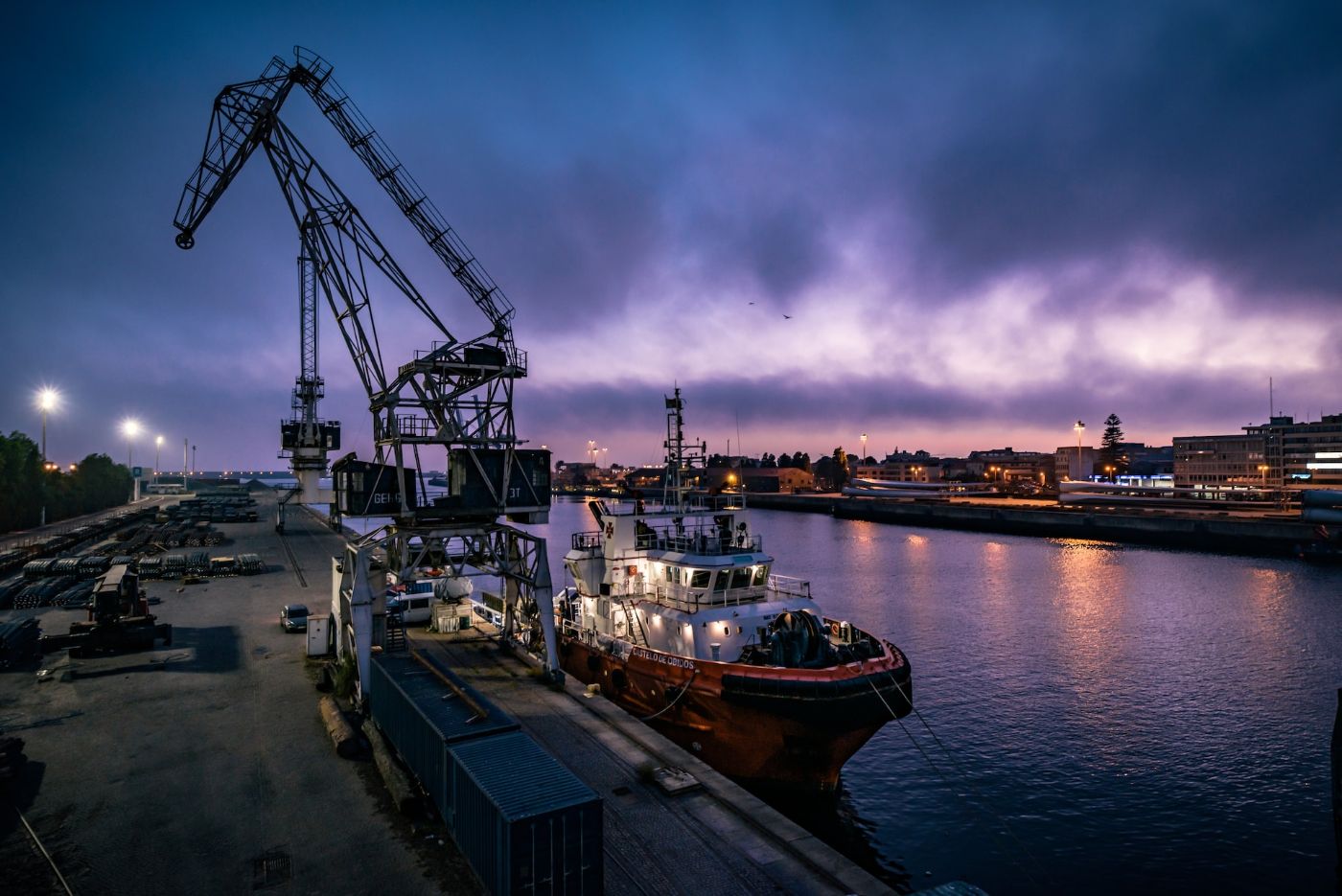 - Can transport boats across large bodies of water
- Can be more cost-effective for longer distances
- Allows for more time to prepare the boat for transport
- Can be slower than road transport
- Limited to ports and water-based routes
- May require additional fees for loading and unloading the boat
Choose crewing if you want to save money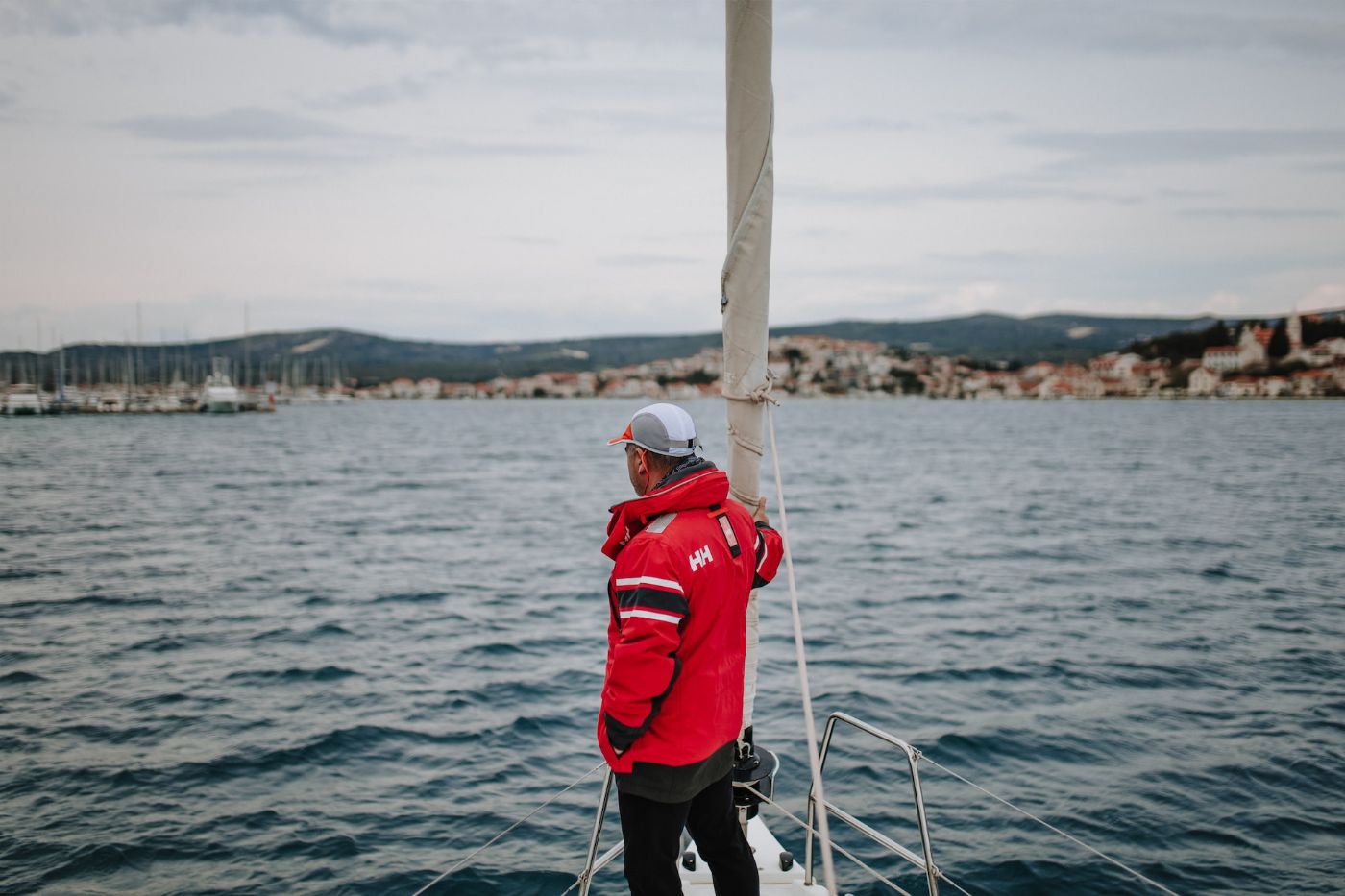 Crewing is a less common option for transporting boats, but it can be a good choice and is actually the most affordable option for those who want to sail their boat to its destination. It involves hiring a crew to sail the boat to the destination port. The cost of crewing depends on the distance traveled, the size of the boat, and the experience of the crew. - Allows for an adventurous journey
- Can be a good option for those who want to sail their boat anyway
- Requires experienced crew members
- Can be affected by weather conditions and other factors
Distance and the route, boat size and weight, season and timing, and additional expenses for storage are several factors that can affect the overall cost of transporting your boat. Distance and the route can impact the overall costs of boat transportIn general, the longer the distance, the more you can expect to pay for transportation. The route can also play a role in the cost, as some routes may require more permits or escorts, which can add to the overall cost. The boat size and weight can influence the cost of boat transportTechnically larger boats will require more specialized equipment and may also require more permits and escorts, which can add to the cost. The weight of the boat can also impact the cost, as heavier boats may require more fuel and more specialized equipment to transport. The season and timing can also affect the overall cost of boat transportThe season and timing of your boat transport can also play a role in the overall cost. During peak season, which is typically from May to September, you can expect to pay more for transportation . If you need your boat transported on short notice, you may also pay more for the service. Additional expenses can also alter the overall costs of boat transportIf you are transporting your boat via road, you may need to obtain permits and pay for tolls and fuel . If you are shipping your boat, there may be fees for loading and unloading , as well as customs fees if you are transporting your boat internationally. Other additional expenses might include the following: Costs for storing your boat after transportSome storage facilities offer indoor or outdoor storage options, and prices may vary depending on the type of storage you choose. To find out the cost of different boat storage options, you can try reading this article. When choosing a storage facility, you may need to consider the security and accessibility of the facility. You want to ensure that your boat is safe and that you can easily access it when needed. Some storage facilities may also offer additional services such as maintenance and cleaning, which can add to the overall cost.  Costs for container storageThe cost of a container will depend on the size of your boat and the type of container you choose. Some containers may be more expensive than others, depending on their features and level of protection. Perhaps consider the level of protection your boat requires. Your boat must be protected from the elements and any potential damage during transportation. Some containers may also offer additional features such as climate control and ventilation, which can also add to the overall cost. Leave a commentYou may also like, average cost to ship a boat across the atlantic (eu to us). Did you know that you can transport your boat across the Atlantic from the EU to the US using different shipping methods? The cost to ship varies depending on the … 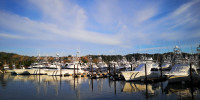 How Much Does it Cost to Ship a Boat to Costa Rica?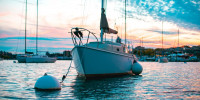 Average Sailboat Insurance Cost in 2023 (13 Examples)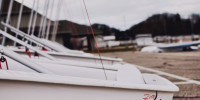 How Much Does It Cost To Dry Dock a Boat Exactly? (3 Types) | | | | | | |
IMAGES
VIDEO
COMMENTS
What Does it Cost to Buy a Sailboat? The average price of a new sailboat per foot in USD: under 30 ft: $2,400 per ft. 30 - 50 ft: $5,700 - $8,500 per ft. over 50 ft: $11,900 - $65,400 per ft. On average, second-hand sailboats go at 1/3 - 1/4 of the cost of a new boat: under 30 ft: $815 per ft. 30 - 50 ft: $3,020 per ft.
Best-value ocean cruiser (40') $166,000. $1,300. The average price of new sailboats is $425,000 ($127,000 to $821,000). The average price of used sailboats is $278,000 ($67,000 to $555,000). Maintenance costs are on average $2,000 - $3,000 per year, and the average total annual cost is $3,000 to $7,000. Of course the price of a sailboat depends ...
Preowned sailboats for sale over 40 feet preowned sailboats for sale by owner.
The price of owning a sailboat may vary depending on several factors such as the size of the sailboat, its model, whether it's new or used, and how often you use the sailboat. For example, a new Islander 36' can cost nearly $150,000 while a used one can cost you around $40,000. Again, the price of a new 26' Catalina can cost you around $80,000 ...
A 40-foot yacht can be found used for around $200,000 and new models can cost as much as a million dollars. There are always lots of used yachts for sale around 40 feet in length, which makes them more attractive to first-time buyers. Technically, a yacht begins at 23 feet. However, yachts that size will more often be referred to as boats.
For docking a 40-foot cat, you could spend $12,042 yearly in a popular marina with long waiting lists. The price drops for marinas with little or no waiting lists. Also, the bigger the boat, the more expensive the mooring fee will be. A lot of marinas offer additional services on top of the basic package.
The average price of used sailboats is around $21,000, but new boats cost $60,000 on average and upwards. Some used boats can be purchased for less than. ... Despite its 40-foot length, the Bermuda 40 is limited in space, making it ideal for couples. It has V-berths forward, which you can convert to a comfortable double bed. ...
40-44ft: $326,000: $150,000: 45-49ft: $400,000: $162,000 ... Trailer $1,000. Sales tax $ 0. Recurring costs. Docking at $25/ft $ 0. Insurance at 1.5% $ 0. Taxes varies. Maintenance at 10% ... If you want to read a more in-depth exploration of sailboat ownership costs, I recommend you read our guide. Also read: How Much Sailboats Cost On Average ...
This typically costs around $500 for a 40-foot or smaller yachtDiscover Boating. Finding the right sailboat ultimately depends on a balance between one's budget, specific requirements, and realistic expectations. ... For larger boats of 30 feet and up, these costs can increase significantly, potentially reaching $7,000 or more when considering ...
The cost of a 40 foot sailboat can vary greatly depending on the features and condition of the boat. Generally, a 40 foot sailboat can range from around $50,000 to $300,000 or more. It is important to research the specific features and condition of the boat before making a purchase to ensure you get the most value for your money.
The average cost of a new cruising sailboat is about $250,000. This number is taken from analyzing new sailboat listings of various sizes, with the average being about 35 feet in overall length. New cruising sailboats range in price from around $150,000 to well north of $500,000 for large and custom models. Aluminum sailboats cost significantly ...
On average, a new cruising sailboat can cost anywhere from $100,000 to over $1 million. Some popular brands, such as Beneteau and Jeanneau, offer models in the $200,000 to $400,000 range. Luxury cruising sailboats from well-known brands like Hanse or any catamarans can easily exceed $500,000. Of course, the cost will also depend on the size and ...
The average cost of a sailboat for sale will vary all over the board, given the many sizes, ... A 22-foot sailboat may be close to $30,000 brand new, yet an older model of the same boat built in the late 1970s might be purchased for $5,500 or less. ... the Valiant 40/42 remains a popular choice for cruisers. The older, original Valiant 40s come ...
The boat cost of ownership calculator includes a boat loan calculator, estimates boat financing, boat insurance average cost, boat maintenance and docking costs. Home Explore boats Sign Up Log In Help Add Boat. Text (910) 447-2456. Call (910) 447-2456. Toggle navigation. Sailo logo icon Sailo logo text. Explore boats; Sign Up ...
The Blue Jacket 40 shoulders aside a medium chop with her reacher deployed. This nearly 9-foot increase in mast height and the shedding of almost 5,000 pounds redefine sailplan options. Some might assume this would set the stage for a carbon mast and boom, plus create an urge to use titanium pins and other weight-saving hardware.
The cost of a small boat, 6-10 feet, can cost anywhere from $500 to $800. If you're looking for brand-name superyachts, prepare to spend millions of dollars from the start. ... Class 2: 26-40 feet; Class 3: 40-65 feet; Many factors will determine the boat size most suited for you, including previous boating experience, storage space ...
A 40 foot boats is great for couples or families looking to take extended weekend trips and anglers who enjoy inshore and offshore fishing. Most 40 ft yachts feature 1-2 cabins below deck, a galley, and a head. Shop 40 Foot Boats For Sale. Explore a range of 40-foot yachts and 40 ft boats for sale, including center consoles, motor yachts ...
Dock lines ($30 to $100 each) - Sized to your boat, four to six lines required. Fenders (also called bumpers) - To protect the boat from the dock ($20 to $60 each) sized to your boat, two to four required. Launch fees - Usually charged at most public ramps, and varies at about $5 to $15 per launch.
However, larger boats of 30 feet and up will cost considerably more. The actual total annual cost is $3,000 to $7,000, due to other recurring costs like docking and insurance fees. ... Average cost; 40 ft bluewater cruiser: everything except winterizing: $3,225: 24 ft daytripper: seasonal maintenance, hull, engine, rigging: $1,600: 34 ft ...
Most people end up planning for the cost of owning a boat to run at between 15 and 25 percent of the boat's overall value. That's a wide range and plenty of boats will fall outside of it, with the general rule of thumb being that the larger and more complex any vessel is, the bigger a percentage it will require.
Sailboats can also be transported across an ocean on their own with the help of a hired captain and crew. Costs vary widely based on size and type, and they range from $200 to more than $15,000. In this article, we'll cover several of the most common sailboat transportation methods.
Seems like a lot for a 40' boat. I have got quotes for sails for my 40' boat and they range from $8k for a jib and a main and I replaced the standing rigging on my boat. That cost me $10k. This was rod rigging and increased the price quite a bit. if it were wire you could get away for about half that price.
Enter a start address, end address, and boat dimensions to calculate a shipping cost estimate. Boat Width. ft.
But actually, it doesn't have to be pricey. Let me give you three options for transporting a 40-foot boat, with a breakdown of costs for each. The average cost of transporting a 40-foot boat by road is between $2.75 and $3.75 per mile. For shipping, the cost can range from $1 to $3 per mile for distances under 1,000 miles.